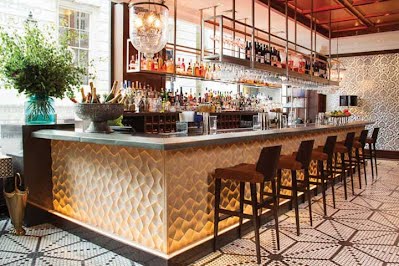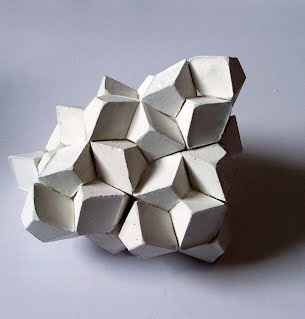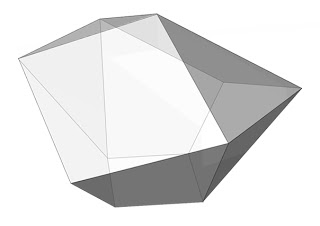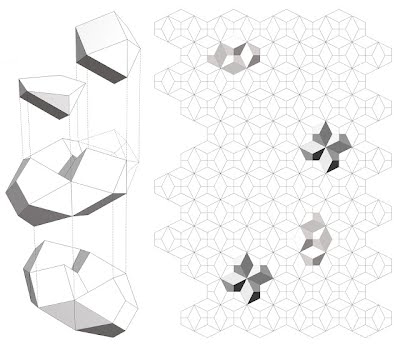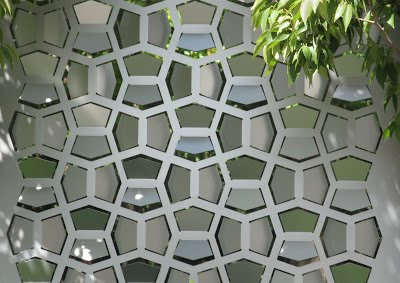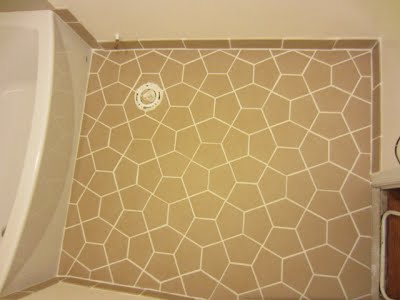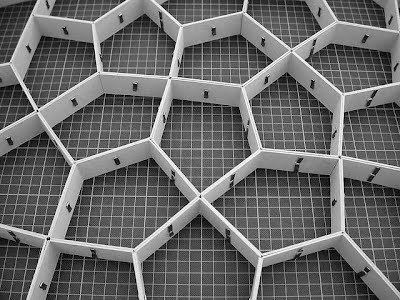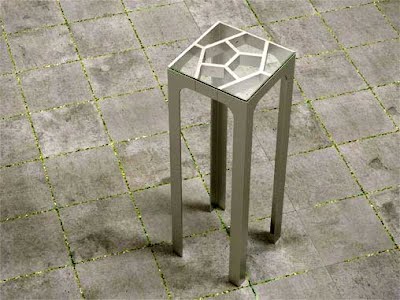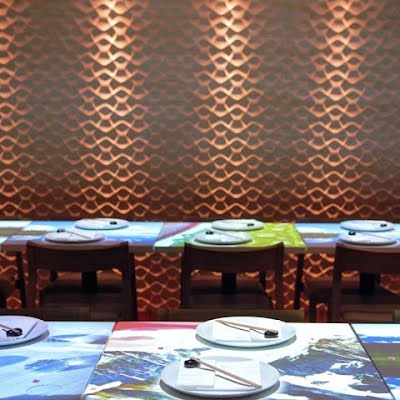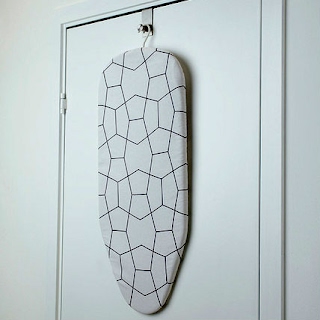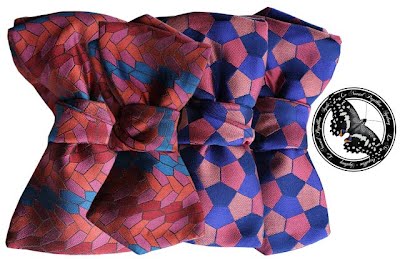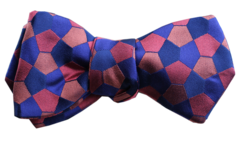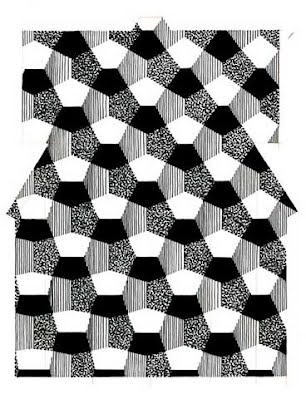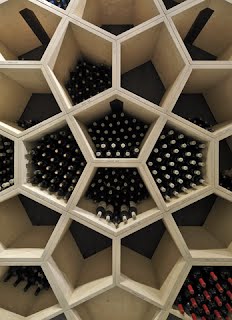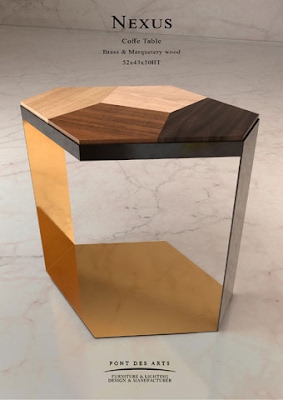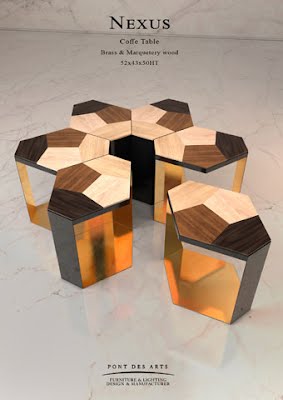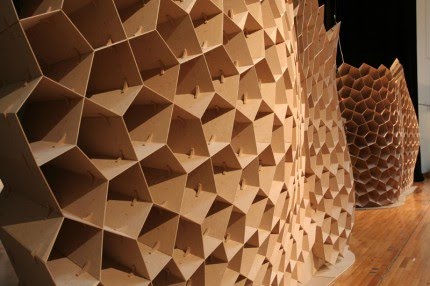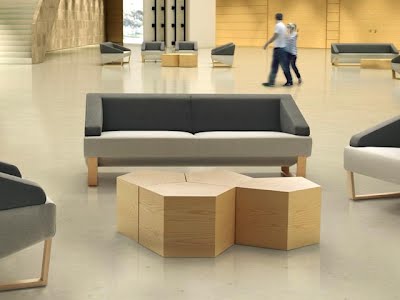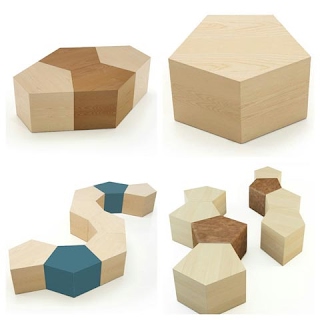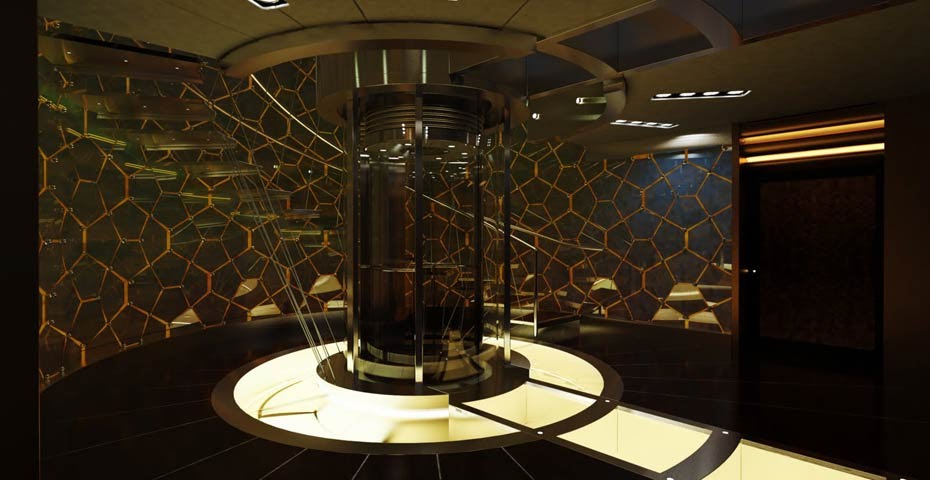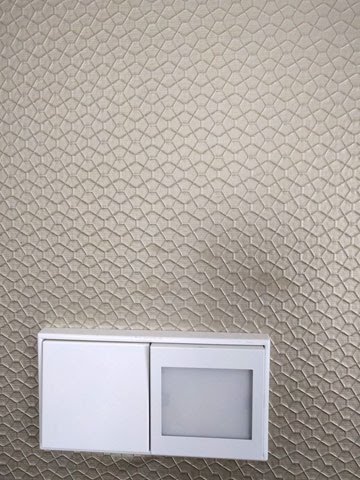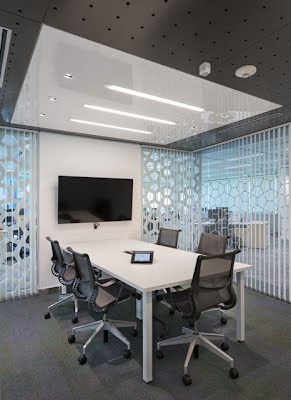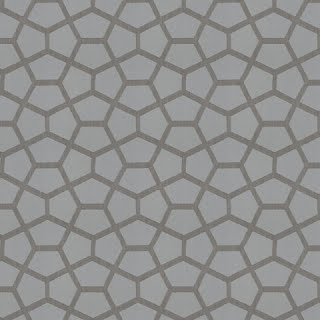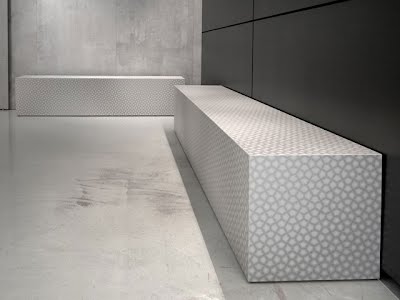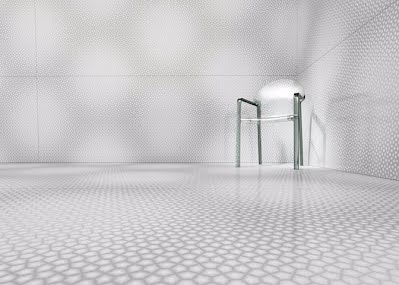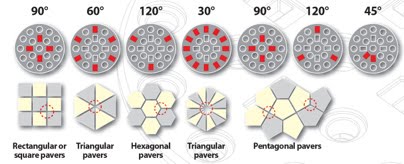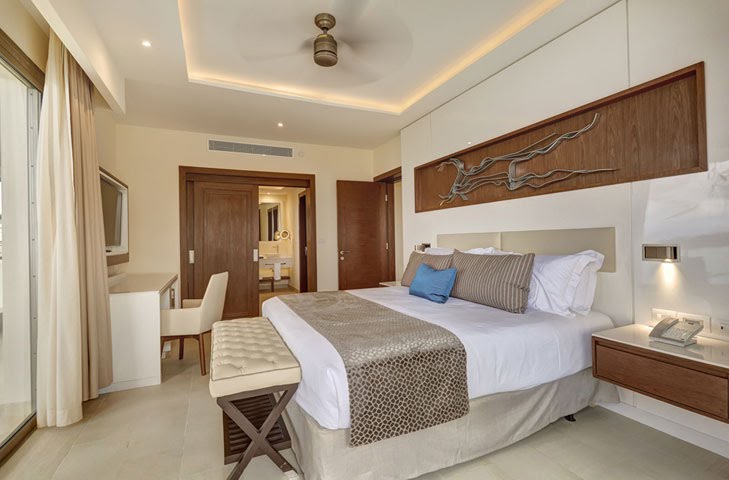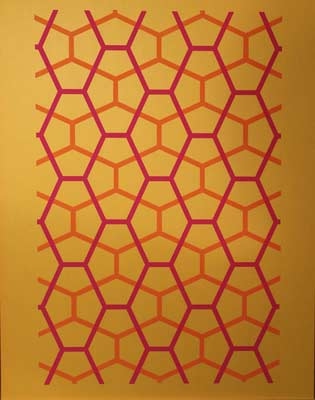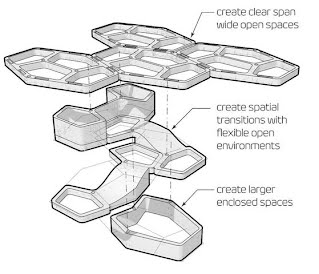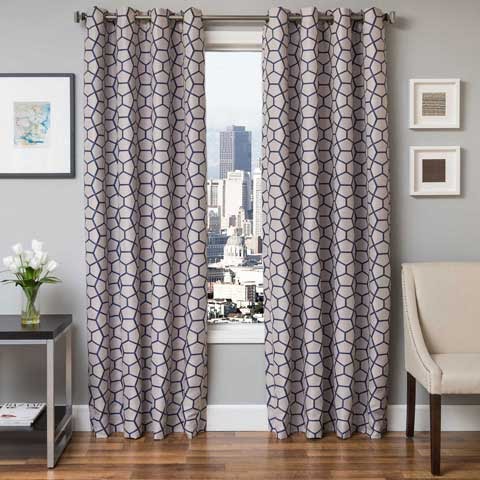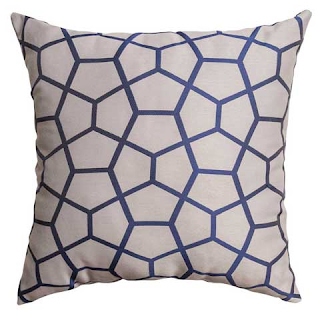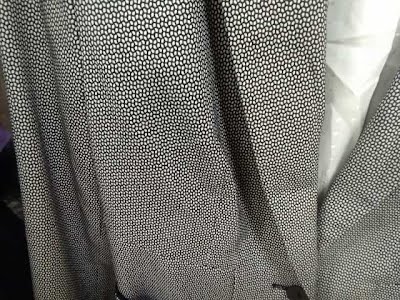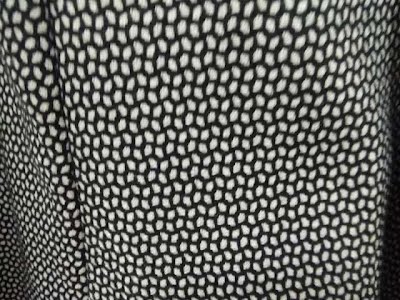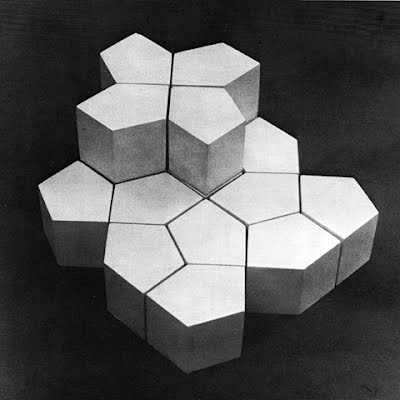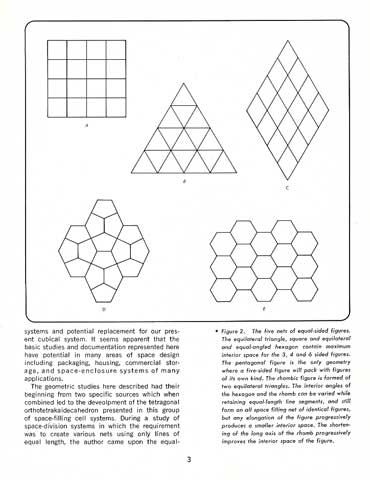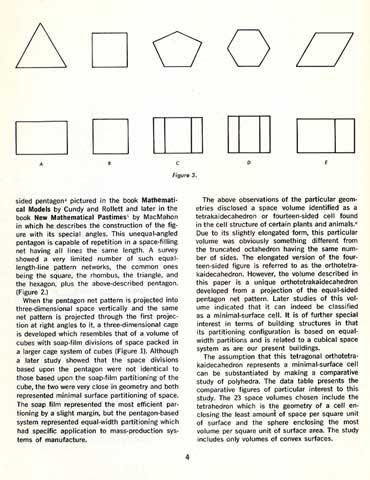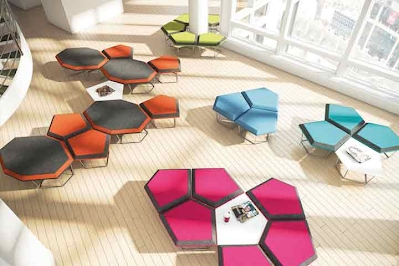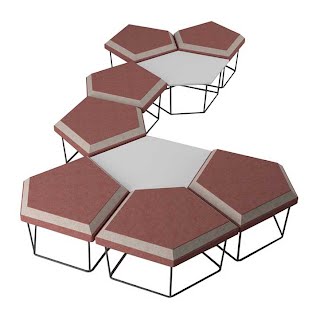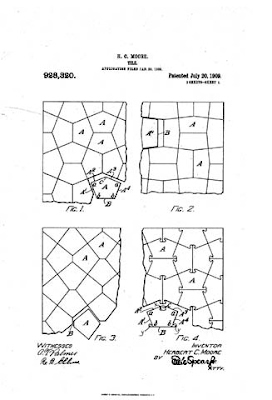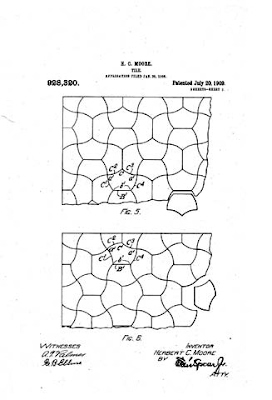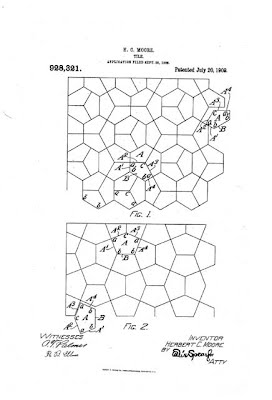Under Rearrangement 6 December 2019+ A continuation of the Cairo Tiling 'as' theme, with upon having distinct, dedicated sections for extensive architecture, flooring, paving and wall tiles applications, I now turn my attention, to what I term as miscellaneous entries. As the title implies, this is a non-dedicated section, of a wide range of such miscellaneous entries. As such, I differentiate these into three categories, as according to the depth of each entry, as Miscellaneous 1, 2 and 3. Miscellaneous 1 consists of entries that have 6 instances or more from a single entry, whilst Miscellaneous has 2 is of two-five entries, whilst Miscellaneous 3, here, has only single instances. The criteria is somewhat arbitrary, with the cut-off point is judged to result in roughly equal length pages. This is for the sake of a more digestible page. Previously, at least of the last incarnation, the entries of Miscellaneous 1 and Miscellaneous 2 were of a single long extensive page, which with ad hoc additions had become a little disjoint and unwieldy. This separation into distinct entities thus results in a more orderly arrangement and page. by the very nature this study is in a permanent state of flux, as I find time to research, add to the page and on occasion add sightings sent to me by correspondents.The entries are ordered as by the frequency of instances, with the more numerous first. A miscellaneous, largely ‘for fun’ collection of various non in situ Cairo tiling aspects, in which the Cairo tiling is to be seen in a variety of objects and applications. The format for each entry is initial outline, a picture and discussions, ending with links. On occasions, I am unable to show pictures as the image holder did not respond to request for permissions, and where this arises I thus instead give a link. I began by placing sightings individually, broadly as found, rather than as a type, such as all instances of tables and panels etc. However, as of the 2019 return, I now place as to type, and frequency, which at least gives a modicum of order. Note that the compilation is of an ad hoc nature, of instances as found upon my researches, and therefore the collection, being in a permanent state of flux (and so on occasion inconsistent, especially as regards numbering), ordered as by the frequency of instances, with the more numerous first. Instances of pavings, wall tiles, floors and architecture, of which there are many, that once were included have been better judged placed as separate, dedicated pages (as of April 2019). Does anyone know of other instances? Do let me know for inclusion. The instances include: 1 Seat, Modular, Dsignio/Beltá & Frajumar, Spain Tables, modular, single elements. Dsignio/Beltá & Frajumar, Spain Bisymmetric Hendecahedron, Jak Drinnan Torus, Kenneth Peel Bar, Chutney Mary Indian Restaurant, UK Light Box, Outer Art Co., Australia 3D Panel, Outer Art Co., Australia Shower Base (John Mansfield) Birdhouse (Florian Heinzelmann) Penta Graphene (Qian Wang) Ironing Board Cover (Ikea) Decorative Pillow (cushion) (Softline, US) Pavement Drawing (Pan-American Games) Kimono (Moriguchi Kunihiko) Canopy (Maple Square, Toronto) Wine Racks (Grassi Petre) Marquetry (Heliot and Co) Exhibition Stand by Institute for Lightweight Structures and Conceptual Design (ILEK) Acoustic Panels 'Interior Decor' on SuperYacht Lumen by Adriel Designs or John Cantu Board Game, 'Cairo Corridor', by Markus Hagenauer Escher-like jigsaw puzzle, by Angie Leslie (Curious Minds) Hotel interior (Crowne Plaza Hotel, Den Haag, The Netherlands) Panelling (Bayer Pharmaceuticals, Buenos Aires, Argentina) Fabrics, by JAB Anstoetz Group, Germany Panels, by Mac Stopa of Massive Design, Poland 'Pedestal', by Buzon, UK Towel, Royalton Negril, Jamaica Amazon Banner, Amazon UK Silkscreen Prints, Holly Alderman and Arthur Loeb, US Mark Cabrinha, 'Spatial Puzzle' Laurel and Hardy, Bedsheet Pentagonal Prism Packing Formation by Donald G. Wood Maurits C. Escher: Cairo Tiling Periodic Drawings and Sketches Chutney Mary Indian Restaurant, Pukka Bar, London, UK An instance of ‘bar décor’, for the want of a better description, at the Chutney Mary Indian Restaurant, Pukka Bar, 72-73 St. James's, London, UK, a fine dining Indian restaurant with a glamorous bar. (An exact address is given for the mathematical tourist.) The Chutney Mary moved to a stunning setting in elegant St. James's in the heart of London in 2015 from its original Chelsea location. The reason for the curious name is not known. The design can be seen running the length and sides of the bar. As an aside, the same bar sighting design can be seen at the Inamo restaurant, see above. Strictly, this sighting is open as to inclusion here as this is not wholly a Cairo tiling, as the vertical (but not horizontal) ‘baseline’ has been omitted on the pentagons, but nonetheless, as the design is indeed and intended to be of a Cairo like-nature it is thus included. Not unexpectedly, there is no mention of the tiling on the Chutney Mary website. Therefore, whether the use of the Cairo tiling is purposeful or accidental, the latter in the sense of a generic pentagon tiling is unknown. However, given the lack of reference, likely they are unaware of the association. As alluded to above, the angles and side lengths are not given. I did not contact the Chutney Mary, judged that for such a non-commercial query to a (decidedly up-market) restaurant I would be unlikely to receive a reply. Background Details Chutney Mary is a fine dining Indian restaurant in London, founded in 1990 by Ranjit Mathrani & Namita Panjabi through their restaurant company whose current name is MW Eat. It has received considerable critical acclaim over the years. It was originally in Kings Road, Chelsea, but relocated to St James's, London in 2015. https://www.chutneymary.com/Pukka-Bar/Pukka-Bar Entry 13 November 2019 Bisymmetric Hendecahedron, by Jak Drinnan Another curiosity of the Cairo tiling is that it can be seen in an instance of polyhedra, specifically of the space-filling Bisymmetric Hendecahedron. Such a polyhedron is a relatively recent discovery, as reported in a 1996 paper by Guy Inchbald. For further details see: http://www.steelpillow.com/polyhedra/five_sf/five.htm Although the Cairo tiling as an entity was not directly noticed in Inchbald’s paper, an architect, Jak Drinnan, happened to notice this, and being familiar with the Cairo tiling made the association. Although I am interested in polyhedra, this is very much secondary to my interest in tessellation. Indeed, I lack the mathematics here for a true mathematical treatment. Would any reader more familiar with this have anything to say? For more on Jak Drinnan and the bisymmetric hendecahedron per se, see: http://www.jd-d.co.uk/2012/07/material-designing-complexity.html© Jac Drinan Birdhouse, by Florian Heinzelmann Florian Heinzelmann, of the Netherlands, is an architect and founder of SHAU practice, has used the Cairo tiling for an ‘unconventional’, 3D-printed birdhouse, of 2013. I say unconventional as most birdhouses are fully enclosed, as against the open framework as here. He states: The “Bird House” is a 3D-printed building to be inhabited by a small bird. The design uses LEGO® plates, 3D-printed tiles with LEGO® connections that form an organic branch-like façade, and some 3D-printed furniture for the bird. The façade itself is based on the Cairo pentagonal tiling. Also, from our correspondence, an email of 2 July 2013: I was working on another small fun project. A design for a birdhouse which will be exhibited in Bandung. I combined a Cairo tiling with Lego and made new Lego blocks in order to achieve that. It was very interesting for me to combine an existing building system and orthogonal grid of Lego blocks with the Cairo tiling and split the hexagonal/pentagonal order into a square one while making the new Cairo Lego blocks fully compatible. From the above, Heinzelmann is thus aware of the association, and indeed is undoubtedly an enthusiast of the tiling, having also used it previously with the UN Studio's Omotesando project, in 2008 (see the ‘As Architecture’ entry). A feature here not mentioned above is the interweaving aspect. As related, this was a fun project, rather than a commercial instance, and so is thus commercially unavailable. It would be interesting to know if the birds found favour with the open plan! © Florian Heinzelmann. Birdhouse in situ, left; 3D-printed elements, right Background Florian Heinzelmann, Ph.D., M.Arch., Dipl.-Ing. is an architect with research and practice background. He is a director of SHAU which he founded in 2009 together with Daliana Suryawinata and Tobias Hofmann, with offices in Rotterdam (Netherlands), Passau (Germany) and Bandung (Indonesia). SHAU is an award-winning practice, and of which there are too many awards to list all here! The most recent was in 2019 when SHAU got shortlisted with Taman Bima Microlibrary for the Aga Khan Award for Architecture. http://www.shau.nl/en/project/30 The initial impression of a casual glance here is of a single picture, but this is not so, more can be seen by clicking on the arrow to the right, which is easily missed! I speak from experience! Entry 6 November 2019 3D Wall Panel, by Outer Art Co., of Victoria, Australia Outer Art Co., of Abbotsfield, Victoria, Australia, a small web-based (i.e. without a showroom) art design and manufacturing studio, have used the Cairo tiling commercially as a 3D wall panel, simply titled ‘Tessellated’. This is of lightweight aluminium composite, available in a variety of different colours and is produced of a (large) single size, 1200 x 2400 x 3mm thickness, and costs $660. It is unclear if this is intended for indoor or outdoor use; possibly it is both. Notably, the wall panel was exhibited at the prestigious Melbourne International Flower and Garden Show, of 2013. Outer Art has a small, but sufficient website which is searchable. Dating the wall panel is problematical. No indication is given on the site, nor when the company was formed. However, it seems to be of a relatively recent instigation of 2012-2013. A privacy policy notice gives a 2012 date, and so this is thus a plausible dating. Certainly, as the panel was exhibited as above, in 2013, it is of at least that date. No reference is made to the Cairo tiling or indeed on pentagons anywhere on the site! I emailed Outer Art, in 2014, asking for more details and permissions, of which although they at least replied, this was most brief indeed, and of which my queries went unresolved. Therefore, whether the use of the Cairo tiling is purposeful or accidental, the latter in the sense of a generic pentagon tiling is unknown. However, given the lack of reference, likely they are unaware of the association. As alluded to above, the angles and side lengths are not given. As an aside, not unsurprisingly, without any reference to pentagons, never mind the Cairo tiling, these sightings do not appear in my dedicated searches on the Cairo tiling and pentagons. It only showed up on Vireya Jacquard’s blog, detailed below, which mentioned pentagons. Without this mention, this sighting would undoubtedly have been missed by myself. Therefore, it is open to speculation as to how many other instances there are of the Cairo tiling where a like situation has arisen. Note that Outer Art also has another instance of the Cairo tiling, as a light box. See that entry for further details. Background Details Outer Art Co. is a web-based art design and manufacturing studio. They create decorative facades such as garden walls or restaurant screens, rusted metal screens, light feature boxes, laser cut screens and more. Situated in the urban back streets of Collingwood, they service clients from all over Australia or internationally. They are award-winning artists who love to create. Curiously, the names of the people involved are not stated! But it is obviously just a small concern, possibly of just one or two people. The Melbourne International Flower and Garden Show is a flower show held annually since 1995 in early April each year, in Melbourne, Australia. It is the largest horticultural event in the southern hemisphere, attracting over 100,000 visitors. It is rated among the top five flower and garden shows in the world. https://outerart.com.au/ https://outerart.com.au/collections/3d-walls/products/tessellated Acknowledgements Vireya Jacquard, of Australia, who upon seeing the wall panel exhibited at the Melbourne International Flower and Garden Show posted a photo on her blog, which is where this sighting first came to my attention upon my pentagon searches. Upon my usual request for further details, she made a special effort to find the designer/manufacturer for me, and more. Thanks, Vireya! Light Box, by Outer Art Co., of Victoria, Australia Outer Art Co., of Abbotsfield, Victoria, Australia, a small web-based (i.e. without a showroom) art design and manufacturing studio, have used the Cairo tiling commercially as a light box, simply titled ‘Tessellated Light Box’. It is of a lightweight aluminium composite, available in a variety of different colours. It comes in three different sizes, large (2150mm x 950mm x 100mm), medium (950mm x 950mm x 100mm), and small (950mm x 550mm x 100mm) and costs $770. It is seemingly as an installation, rather than for the more ‘traditional’ artist use as the name suggests, of tracing designs. Outer Art has a small, but sufficient website which is searchable. Dating the light box is problematical. No indication is given on the site, nor when the company was formed. However, it seems to be of a relatively recent instigation of some time after 2012. A privacy policy notice gives a 2012 date, and so this is thus a plausible beginning. However, this sighting was first noticed only in November 2019, when I revisited the site, in regards to a 3D wall panel, when I first found the site, in 2014. Back then, I did not record this sighting, and so possibly it is of a more recent introduction. But I may simply have overlooked this at the time! However, I doubt this, as the website is relatively small, and so likely I thoroughly checked all. But whatever, it is thus ‘recent’, and not ‘old’. No reference is made to the Cairo tiling or indeed on pentagons anywhere on the site! I emailed Outer Art, in 2014, about the wall panel they also produce, apparently being unaware of the light box at the time, asking for more details and permissions, of which although they at least replied, this was most brief indeed, and of which my queries went unresolved. Therefore, whether the use of the Cairo tiling is purposeful or accidental, the latter in the sense of a generic pentagon tiling is unknown. However, given the lack of reference, likely they are unaware of the association. As alluded to above, the angles and side lengths are not given. As an aside, not unsurprisingly, without any reference to pentagons, never mind the Cairo tiling, these sightings do not appear in my dedicated searches on the Cairo tiling and pentagons. It only showed up on Vireya Jacquard’s blog, on the wall panel, detailed below, which mentioned pentagons. Without this mention, this sighting would undoubtedly have been missed by myself. Therefore, it is open to speculation as to how many other instances there are of the Cairo tiling where a like situation has arisen. Note that Outer Art also has another instance of the Cairo tiling, as a 3D wall panel. See that entry for further details. Background Details Outer Art Co. is a web-based art design and manufacturing studio. They create decorative facades such as garden walls or restaurant screens, rusted metal screens, light feature boxes, laser cut screens and more. Situated in the urban back streets of Collingwood, they service clients from all over Australia or internationally. They are award-winning artists who love to create. Curiously, the names of the people involved are not stated! But it is obviously just a small concern, possibly of just one or two people. https://outerart.com.au/ https://outerart.com.au/collections/lights/products/tessellated-1 Shower Base, by John Mansfield An instance of a modern-day self-design is of bathroom floor at the home of John Mansfield, in North Potomac, Maryland, USA (about 25 miles north by north-west from the centre of Washington, D.C). This was built during the summer of 2014. The material is porcelain. The Cairo tiling was specially chosen for the project. John told me; I wanted to do something mathematically interesting. I considered Penrose tilings, but in the small space of a bathroom it would be hard to appreciate that that pattern, though non-periodic, is not merely random. Plus I didn't like the look of that so much. Looking about tesselations, I came upon periodic arrangements of pentagons. I liked the interlacing of the two systems of hexagons. Building the floor with equilateral pentagons would allow an interesting geometric construction. © John MansfieldTable, by Andreas Hopf No reference is made to the Cairo reference on the site or catalogues, or indeed elsewhere. The table is discussed elsewhere, notably on Flickr, where it is titled as above. The somewhat obscure ‘D1’ reference is seemingly of a crystallographic classification, using Schoenflies’s notation, of a letter and number. However, upon checking, this does not seem to correlate, and so I am strictly unsure as to the meaning here. In correspondence in 2013 he told me: … We arrived at the D1 pentagon through an analysis of all isohedral tilings, so the background was purely mathematical interest, because some isohedral tilings are quite suitable for interior architecture projects However, I failed to establish if the use of the Cairo tiling is purposeful or accidental, the latter in the sense of a generic pentagon tiling. Although I mentioned the Cairo connection, I did not specifically ask if he was aware of it, but simply presumed that he was aware of it, as stated in my email. However, given the lack of specific response, likely he is, or was, unaware of the association. As alluded to above, with lack of detail, the angles and side lengths are not given. Interestingly his associate, Axel Nordin, has also used the Cairo tiling in his own work ’Strategies for consumer control of complex product forms in generative design systems’, again not using the Cairo designature, and again, referring to a D1 pentagon. Likely both are unaware of the association. Background Details There is little background detail on Hopf himself. However, he has exhibited widely in western Europe, from 2010, and is now based in Berlin, Germany. https://www.flickr.com/photos/andreas_hopf/4971529309/ http://www.hopfnordin.se/documents/HopfNordin_en_2016.pdf Interior Décor, Inamo St James Restaurant in Regent Street, London, UK An instance of ‘interior décor’, for the want of a better description, at the now-defunct Inamo St James restaurant in Regent Street, London, UK opened 2010, closed 2016, and which relocated to Covent Garden in 2016. Inamo is a small restaurant chain, with three restaurants in Soho, Covent Garden and Camden. I qualify this sighting as ‘interior décor’ as it is not exactly clear as to categorically define this sighting! The tiling appeared on a variety of décor and elsewhere, not easily described! In more detail, the design appears on promotional materials, and seemingly on walls, bars and tables, possibly combined, it’s all infuriatingly most unclear! With the closing of St. James, it now seems lost, as appears unlikely that the décor has been ‘transferred’; certainly, I cannot find any images of the tiling at the new location, or indeed at other branches in Soho, which launched the brand in 2008 and Camden, also of 2016. I had thought perhaps that this may appear as a corporate brand across the range, but apparently not so. The company/design agency responsible for the décor is unknown. The design agency ‘Blacksheep’ undertook the Soho design, but do not appear to have been associated with that of St. James. If any reader does visit these restaurants, do let me know as to sightings, positive or otherwise! As an aside, the same sighting can be seen at the Chutney Mary ‘Pukka Bar’, see below. Not unexpectedly, there is no mention of the tiling on the Imamo website. Therefore, whether the use of the Cairo tiling is purposeful or accidental, the latter in the sense of a generic pentagon tiling is unknown. However, given the lack of reference, likely they are unaware of the association. As alluded to above, the angles and side lengths are not given. Strictly, this sighting is open as to inclusion here as this is not wholly a Cairo tiling, as the vertical (but not horizontal) ‘baseline’ has been omitted on the pentagons, but nonetheless, as the design is indeed and intended to be of a Cairo like-nature it is thus included. I did not contact Inamo, judged that for such a non-commercial query to a restaurant I would be unlikely to receive a reply. Background Details Inamo https://www.inamo-restaurant.com/ Inamo are pioneering restaurants and bars, with locations in Soho, Covent Garden and Camden. They craft Japanese, Chinese, Thai & Korean cuisine, including fresh sushi, served to share. They were voted best local restaurant and outside bar in Camden, and best Brunch in Central London by TimeOut in 2018. Their first site opened in 2008, and since then their groundbreaking interactive technology has delighted over a million patrons, and achieved countless awards. Interactive projections on your table surface enable you to set the mood, discover the local neighbourhood, and entertain you with retro games, live chef-cam feed, and even graffiti your table top. Acknowledgement: Michael Osborne, an expert on robotics at Oxford University, who kindly told me the restaurant and location, upon my seeing this sighting on a BBC interview featuring him talking on robotics conducted at the restaurant on 14 September 2015, of which the panel can be seen in the background 45 seconds into the clip: http://www.bbc.co.uk/news/technology-34247358 Penta-graphene A recent (2015), albeit somewhat controversial development concerning the Cairo tiling, is in the form of scientific discovery, of ‘Penta-graphene’ that made the news in the scientific world, as drawn to my attention by Eric Fridén, a writer for a science journal in Sweden. I’ll begin by saying that such advanced physics and chemistry matters are way beyond my understanding, and so I am more than a little wary of commenting on the intricacies here, at the risk of making a fool of myself. However, I will popularly relate the story, with pointers to the advanced aspects should the reader so desire. Researchers at Virginia Commonwealth University (VCU) and universities in China and Japan have discovered a new structural variant of carbon called ‘Penta-graphene’ – a very thin sheet of pure carbon that has a unique structure said to be inspired by the Cairo tiling. The newly discovered material is a single layer of carbon pentagons that resembles the Cairo tiling, and that appears to be dynamically, thermally and mechanically stable and can withstand temperatures up to 1,000 K (730 °C; 1,340 °F).
VCU graphic, left, Restaurant image © Qian Wang, right The background to discovery is relayed by one of the researchers, Qian Wang, Ph.D., a professor at Peking University and an adjunct professor at VCU, who was dining in a restaurant in Beijing with her husband when she noticed artwork on the wall depicting pentagon tiles from the streets of Cairo. 'I told my husband, "Come, see! This is a pattern composed only of pentagons,'" she said. "I took a picture and sent it to one of my students, and said, 'I think we can make this. It might be stable. But you must check it carefully.' He did, and it turned out that this structure is so beautiful yet also very simple." This chance sighting in a restaurant thus led to the discovery! I followed this up with Qian, who kindly told me in 10 February 2015 email: Of note here is that the illustration in the paper is that of a specific type, namely the dual, as shown on Wikipedia. Whether Qian’s penta-graphene instance can be varied from minima to maxima Cairo pentagon is not made clear. It should be pointed out this was not by physical experiment (as I understand it, with test tubes etc.) but by computer simulations. However, shortly afterwards, in October 2015, another team, led by Christopher P. Ewels, poured cold water on this. Since then, as far as I can tell, whether this is indeed an actual discovery or has been rebutted is left open-ended. As mentioned above, I was contacted by Eric Fridén, who upon becoming aware of the discovery, and the reference to the Cairo tiling, set out to investigate this, and desiring an actual picture for an article, found my pages and in particular a photo by Craig Scott: 10 February 2015 email I write for a swedish science-magazine, and I'm working on an article on the pentagonal cairo-pattern. (A new material made up of carbon atoms layed out in a cairo pattern has just been discovered.) tess-elation.co.uk has been a big help! One picture in particular caught our eye - depicting the cairo-pattern on heliopolis - copyrighted to one Craig Scott... In the course of this, I tried to establish the journal but was unable to categorically do so. He appears to be associated with ‘Forskning & Framsteg’ (Research & Progress), although whether this is solely online or in print (or both) is unclear. Indeed, I am even unsure if the idea was realised! Given the publicity the discovery attracted, I was expecting perhaps more people would have contacted me for use of in situ pictures, but Fridén’s request was the only one. https://www.pnas.org/content/pnas/112/8/2372.full.pdf (Of an advanced nature) https://www.pnas.org/content/pnas/early/2015/12/01/1520402112.full.pdf (Of an advanced nature). https://news.vcu.edu/article/Pentagraphene_a_new_structural_variant_of_carbon_discovered (Popular account) https://en.wikipedia.org/wiki/Penta-graphene (Broadly popular account) Entry 17 June 2015. Revised 3 January 2020. This builds on a ten-line entry of 17 June 2015, and that although broadly sufficed, this did not mention the later ‘rebuttal’ by Ewels et al., to which I now add. Further, I now include email correspondence with Qian and Fridén, as well as adding links to papers and commenting on the dual tiling. Paragraphs beginning with ‘Researches..’ and ‘The background…’ remain unaltered. Puzzle, by Angie Leslie, of ‘Curious Minds’ Another, so far unique instance, is that of an Cairo Escher-like puzzle, of fish, by Angie Leslie of the US company ‘Curious Minds’, who specialise in creating unique educational learning toys for toddlers and preschoolers. These are commercially available, at the above address. (Note that this company is not to be confused with another of the same name, in Australia). To make clear the Cairo tile aspect, I have overlaid suitable lines. As such, this is the first such instance of a Cairo puzzle Escher-style, © Angie Leslie https://www.curiousmindsbusybags.com/collections/wooden-toys/products/cop Ironing Board Cover, IKEA Jäll Tabletop An instance of tabletop ironing board cover, from IKEA, titled Jäll, albeit included here with reservation. Strictly, this sighting is open as to inclusion here for two reasons: (i) it consists of two different pentagons, and (ii) the tiling is not fully ‘complete’, with ‘omitted’ lines in the context of a Cairo tiling. However, as the design is indeed of a Cairo like-nature it is thus included. The ironing board is easily and economically available, of just £4, from IKEA, and on Amazon. Background details of the cover are essentially only of peripheral interest; no detail is given as to the tiling. IKEA describe this (with care instructions omitted): Description: Frame: Steel, Epoxy/polyester powder coating. Fabric: 100% cotton Filling: Non-woven polyester fabric Dimensions: Ironing surface, length: 73 cm Ironing surface, width: 32 cm Height: 13 cm From the label, this is dated 1999. No designer's name is given (which is understandable).
Quite what, if anything, ‘Jäll’ describes is unclear. (it is also spelt ‘jaell’ in the IKEA link). I tried translating it, but it simply repeated. It may not appear in the Swedish dictionary, but it is simply a made-up title. The term is also applied to a laundry bag and drying rack. Other ironing boards have the names DÄNKA and Ruter.
A few open questions, albeit of very little real interest: 1. Who is the designer? 2. What is the meaning of Jäll?
https://www.ikea.com/gb/en/p/jaell-ironingboard-table-20242890/ IKEA (from Wikipedia) IKEA is a European multinational group that designs and sells ready-to-assemble furniture, kitchen appliances and home accessories, among other useful goods and occasionally home services. Founded in Sweden in 1943 by 17-year-old Ingvar Kamprad, IKEA has been the world's largest furniture retailer since 2008. According to the Bloomberg Billionaires Index, as of January 2018, Kamprad was the eighth richest person in the world, with an estimated net worth of US$58.7 billion. The company's name is an acronym that consists of the founder's initials (Ingvar Kamprad) plus those of Elmtaryd, the family farm where he was born, and the nearby village Agunnaryd (his hometown in Småland, southern Sweden).
Acknowledgements Josée Carrier, for drawing this sighting to my attention in a 1 October 2014 email, upon having seen it at IKEA, and independently, Robert Ferréol, in a 29 February 2015 email.
Original entry 5 January 2016 of a title, picture and credit, no commentary at all! Revised and greatly expanded 12 February 2020. Bow Tie, by Le Noeud Papillon, Sydney, Australia An instance of a bowtie, from Le Noeud Papillon (the knot of the butterfly) founded in c. 2007 by Nicholas Atgemis, of Sydney, Australia, primarily a specialist bowtie maker, and other men’s wear clothing accessories. The company describe themselves as ‘The Finest Dedicated Bow Tie Specialist In The World’. It appears to be a one-person, online business only. The company has a searchable, accessible website and a suitable presence on social media, on Facebook and Instagram, but not Twitter. © Le Noeud Papillon Company. Bowties of Type 15 pentagon and Cairo tiling, left, and Bowtie Cairo tiling, right The background to the introduction in their extensive range arose from Atgemis’s side interest in tessellations (it appears he does not have a background in mathematics), as described in his blog (link below). Specifically, his interest in pentagon tilings per se arose as a result of reading Alex Bellos’s 2015 piece in The Guardian, ‘Attack on the pentagon results in discovery of new mathematical tile’, discovered by Casey Mann, Jennifer McLoud and David Von Derau. He states: I found the article in the The Guardian and immediately set about trying to turn this new pentagon into a silk. Whilst we were there we found another pentagon to tessellate and the results are very unique. No, they are not for everyone, but I envisage that the intellectual at an evening cocktail party would greatly benefit from one, something to begin a conversation with - about tessellations, about mathematics, about polygons or maybe just about about Christmas and the year that's passed. Roughly 20 bows will be made from each silk. This is a limited edition silk. The ‘another pentagon’ is obviously of the Cairo tiling, although not stated as such. As is my wont I contact Atgemis for further details and photo permissions. However, although he replied, albeit briefly in a 20 January 2016 email, further detail was not forthcoming, and so I did not pursue the matter. As certain as I can be, he was unaware of the association. As alluded to, the angles and side lengths are not given.
Be all that as it may, both pentagons were made into silk bowties, of a limited edition of twenty, of $165, of 2016. However, upon a 2020 revisit to the site, contemporary with this revision, these are no longer advertised, and so perhaps they have all been sold and so deleted from their range. A search on the site for ‘pentagons’, and ‘mathematics’ proved fruitless.
Somewhat curiously, Artgemis seems reluctant to refer to himself by name on his site! If he is mentioned I cannot find it, and yet he is interviewed elsewhere, with his name prominent. He only replied to me as ‘Nicolas’ in his email. I only found his full name in passing on an Instagram post of his.
Company Details (from their home page) We specialise in making self-tying bow ties using the finest silks, both woven and printed, as well as velvets and wools. We keep over 22 shapes on file, making us one of the most comprehensive bow tie makers in the world. We also make luxury cotton bespoke shirts, pocket squares, braces and much much more. In our spare time we pen the blog www.lenoeudpapillon.blogspot.com which documents our love for fine menswear and anything that might interest a man who wears bow ties.
https://lenoeudpapillon.com/ (home page) http://lenoeudpapillon.blogspot.com/2015/12/pentagonal-tessellations-mathematics.html (blog post on pentagonal tessellations which relates the Bellos piece as inspiration) https://www.theguardian.com/science/alexs-adventures-in-numberland/2015/aug/10/attack-on-the-pentagon-results-in-discovery-of-new-mathematical-tile (Bellos article) http://www.keikari.com/english/interview-with-nicholas-atgemis/ (Atgemis interview)
Original entry 25 January 2016 of a title, two lines of text, two pictures and credit! Revised and greatly expanded 13 February 2020. ‘Street Art’, Panamaze, by Denegri Bessai Studio at Pan-American Games, Toronto, Canada, 2015 An instance of what is probably best called as ‘street art’, for want of anything better, titled ‘Panamaze’. This was a temporary space at the major international multi-sport event Pan-American Games, Toronto, Canada, in 2015, created by the Canadian architecture practice Denegri Bessai Studio, headed by Maria Denegri and Tom Bessai. This is described in detail in conjunction with an unrelated tower weave structure, of which the latter I retain for the sake of completeness on their page: Together, the combined design elements of Panamaze unify the International Plaza and create a playful and welcoming environment. Another excellent discussion is on the OAA site, see the links below. Interesting, it was featured in a Chinese newspaper as well! See Facebook link below. No mention of the connection as to the Cairo association is made on the site or their social media, or when discussed elsewhere (notably the Ontario Association of Architects (OAA)), and so whether the use of the Cairo tiling is purposeful or accidental, the latter in the sense of a generic pentagon tiling is unknown. Likely, as this is not mentioned, they are unaware of this association. Indeed, further, there is no mention of pentagons either! However, there is a mention on the OAA site, which states: …composed of pentagons organized within hexagons... I did not contact the practice, judged that they would likely not respond, fairly or unfairly, of a non-commercial query. Background Denegri Bessai Studio is a Toronto-based architecture and design studio committed to well-considered and thoughtfully designed objects and spaces that leverage the latest materials and technologies to the benefit of its inhabitants and the broader city. Work from the studio has won numerous design awards and has appeared in a range of local and international publications including Toronto Life, the Globe and Mail, Canadian Architect, Azure and Plan Magazine. Maria Denegri With two decades of architectural experience under her belt, ten of which have been leading her own practice, Maria brings to the table extensive knowledge and leadership experience in the design and execution of architectural projects at a variety of scales, from residential projects to offices and assembly occupancies. Maria compliments her professional experience with a commitment to pedagogy and community. She is a core faculty member at the John H. Daniels Faculty of Architecture, Landscape and Design and is currently a visiting lecturer at the Azrieli School of Architecture & Urbanism at Carleton University. She currently holds the position of Chair of the Toronto Society of Architects. Tom Bessai Tom leads the prototyping, fabrication and computation arm of the studio, ensuring our work makes use of the latest materials and technologies. An accomplished researcher with a strong background in both academia and practice, Tom’s explorations on computation and fabrication have been widely presented and exhibited, including publications in both popular and peer reviewed journals. His research work is complimented by professional experience in forms both local and abroad, including Frank Ghery’s office in Los Angeles and Taylor Hazell Architects in Toronto where he contributed to several important civic institutional projects in Toronto including the renovation and extension of Humber College Lakeshore Campus library. Tom has held a faculty position in design at the John H. Daniels Faculty of Architecture, Landscape and Design since 2001. https://www.denegribessaistudio.com/projects/panamaze (in-depth discussion on the project from the practice) http://www.oaa.on.ca/bloaag-detail/Panamaze/278 (in-depth discussion on the project of the Ontario Association of Architects) https://twitter.com/hashtag/panamaze?src=hashtag_click (Denegri Bessai Studio Twitter feature) https://www.facebook.com/pg/denegribessaistudio/posts/ (Denegri Bessai Studio Facebook feature)Entry 6 January 2016. Expanded 13 December 2019 Kimono, by Kunihiko Moriguchi An instance of a kimono by Kunihiko Moriguchi (1941- ) a noted and celebrated Japanese textile artist as part of an exhibition titled ‘Jomon - Birth of art in prehistoric Japan’ at the House of Culture of Japan in Paris, France from November 16 to December 17, 2016. This is more exactly of a formal kimono (there are different types of formality) with yuzen dyeing (known for their vibrant colours and intricate designs), titled "Red Ridges", of 2000. This is coloured in four colours, in shades of red, in a simple manner as according to the four orientations of the pentagon. Towards the lower end the colouring scheme changes, including dark brown and black. The kimono here was many of many by Moriguchi in the exhibit. Given that the artist is obscure, and with Japanese art terms and traditions and furthermore with nuances thereof, that are likely new, or mostly so to the reader (as they were to me), I have given a more in-depth treatment here in the ‘background’ section, at the foot of the entry. Interestingly, there is also a sketch relating to the kimono as described on the French site ‘Drawing Lab’ (the first art centre dedicated exclusively to contemporary drawing in France). This is captioned: Monochrome 1, 2000, sketch made for the Kimono Hiryô-mon Scarlet Pentagons (private collection), markers on paper © Courtesy of the artist It has also been used as a poster(?) cover on artistikrezo.com, of France’s leading cultural media on the web.
Detail to this particular exhibit is scant in the extreme, with only the title and year known, “Red Ridges", of 2000. It is not clear why this is titled in such an non obvious way. It would be interesting to ask Moriguchi about this, not just on this specific point but in general, but he seems uncontactable. He does not appear to have a website or is on social media, despite appearing active to the present day.
Not unexpectedly, there is no mention of the Cairo tiling at the exhibition, or elsewhere. Moriguchi has used various geometric designs and tilings (and optical illusions) in his works, although the extent of his interest in geometry is unknown. Therefore, whether the use of the Cairo tiling is purposeful or accidental, the latter in the sense of a generic pentagon tiling is unknown. However, given the lack of reference, likely he is unaware of the association. As surmised from the above, the angles and side lengths are not given.
There is an accompanying catalogue to the exhibit in the round Japanese Traditional Art and Crafts, of which presumably the kimono appears, although I have not seen this (or am actively pursuing, deemed both not essential reading and relatively costly, although certainly desirable).
As ever, can anyone add more detail to this?
Background
Kunihiko Moriguchi (from Wikipedia, with additional external detail clarifying as to Yuzen dyeing technique and national treasure) Kunihiko Moriguchi born 1941) is a Japanese textile artist who specializes in the yuzen dyeing technique (Yuzen are dyed textiles from around the Kyoto Prefecture and they are known for their vibrant colours and intricate designs showing nature, animals and mundane, everyday things). He is a Living National Treasure of Japan (a Japanese popular term for those individuals certified as Preservers of Important Intangible Cultural Properties). Biography Moriguchi was born in 1941 in Kyoto. He is the second son of Kako Moriguchi, another well-known yuzen dyer. Moriguchi graduated from the Kyoto City University of Arts in 1963, then travelled to Paris to study at the Ecole des Arts Decoratifs. He was the first Japanese person to earn a scholarship from the French government to study in France. While in France he happened to meet and befriend Balthus, who encouraged him to follow in his father's footsteps rather than becoming a graphic designer in Europe. Moriguchi returned to Japan and began working in his father's workshop in 1967, when he was 26. He began exhibiting his work that year. He married Keiko Terada in 1975. Moriguchi received the Japanese Medal of Honor (purple ribbon) in 2001. In 2007, Moriguchi was named a Living National Treasure of Japan. In 2013, he was awarded the Order of the Rising Sun (gold rays with neck ribbon). Style Much like his father before him, Moriguchi takes his inspiration from nature. Once he has an nature-inspired motif, he transforms it into an abstract, geometric shape. He prioritizes a sense of fluidity, and makes certain that the kimonos he creates are as beautiful when they are being worn as they are when they are being displayed. He drafts his designs on paper, then paints them on white silk crepe. He makes his dyes from scratch. Moriguchi's work is held by several museums including the Metropolitan Museum of Art, the Victoria and Albert Museum, the Los Angeles County Museum of Art, the Hiroshima Prefectural Art Museum, the National Museum of Modern Art, Tokyo, and the National Museum of Modern Art, Kyoto. He has also regularly exhibited at the Japanese Traditional Art Crafts Exhibition since 1967.
Kimono (from Wikipedia) The kimono (lit., "thing to wear" - from the verb ki, "to wear (on the shoulders)" and the noun mono, "thing") is a traditional Japanese garment, and the national dress of Japan. It is a T-shaped, wrapped-front garment and is worn left over right (unless the wearer is deceased). It is usually worn with an obi belt, alongside a number of other accessories, such as zōri shoes and tabi socks. The kimono is constructed of mostly rectangular pieces of fabric, cut from a specific bolt of fabric known as a tanmono, which is 38–42 cm (15–17 in) in width and 12.5 m (41 ft) in length. Various types of kimono indicate the wearer's age, gender, the formality of the occasion, and less commonly, marital status, when worn; decoration, style of wear, and accessories also denote these. Types of kimono can range in formality from the extremely informal to the most formal of occasions. In modern day, the kimono is worn uncommonly within Japan as everyday dress and over time, has fallen out of fashion as the main article of clothing worn by Japanese people. Kimono are now most often seen at summer festivals - where the easy-to-wear yukata is most appropriate - or at formal events, such as weddings and funerals. The people who wear kimono most often (in some cases daily) are likely to be older men and women (who may have grown up wearing it), geisha, maiko, and sumo wrestlers, who are required to wear traditional dress whenever appearing in public. Though the kimono has garnered a reputation as uncomfortable and difficult to wear, it has experienced a number of revivals in popularity over the decades and is still worn as fashionable clothing within Japan.
House of Culture of Japan in Paris (Maison de la culture du Japon). (Excerpted from their Facebook ‘About’ page) Since 1997, the MCJP has presented Japanese culture, whether traditional or contemporary, to a wide audience. The MCJP in Paris represents the Japan Foundation in France and the events taking place there are organized in partnership with the Association for the Maison de la culture du Japon in Paris.
Catalogue Jômon – Naissance de l’art dans le Japon préhistorique The catalog of the exhibition “Jomon - Birth of art in prehistoric Japan” in Paris, la Maison de la culture du Japon à Paris from October 17 to December 8, 2018. This exhibition was organized as part of Japonismes 2018, the cultural event commemorating the 160 years of friendship between Japan and France. This exhibition catalog features all of images and texts on exhibited 64 works and essays of curators, Masayuki Harada (Agency for Cultural Affairs of Japan), Yoshiya Shinagawa (Tokyo National Museum) and others.
Yuzen (from learnjapanese123) Yuzen are dyed textiles from around the Kyoto Prefecture and they are known for their vibrant colors and intricate designs showing nature, animals and mundane, everyday things. These beautiful handpainted fabrics are often used in Japanese kimonos. They involve an elaborate technique of painting dye directly onto a cloth and they feature precise and thin lines as well as captivating color gradients. What sets Kyo Yuzen apart from other textile dyeing methods is a process called the itome-nori. It is when the artist puts starch on the edges of the patterns so that the adjacent colors do not mix together. This technique gives way for designs that look clean and crisp.
Jōmon period (From Wikipedia) The Jōmon period (Jōmon jidai) is the time in Japanese prehistory, traditionally dated between c. 14,000–300 BCE, recently refined to about 1000 BCE, during which Japan was inhabited by a hunter-gatherer culture, which reached a considerable degree of sedentism and cultural complexity. The name "cord-marked" was first applied by the American zoologist and orientalist Edward S. Morse, who discovered sherds of pottery in 1877 and subsequently translated it into Japanese as jōmon. The pottery style characteristic of the first phases of Jōmon culture was decorated by impressing cords into the surface of wet clay and is generally accepted to be among the oldest in East Asia and the world.
Drawing Lab Paris, France (Excerpted and slightly rewritten from their site for clarity) Drawing Lab Paris is the first art centre dedicated exclusively to contemporary drawing in France. It holds a central position in a cultural quarter and is a major destination for all art lovers, with many visitors since the first year. The Drawing Lab Paris has four exhibitions a year, curated by independent curators. One of these will be devoted to the Drawing Now Paris award winner, granted by the first international contemporary art fair exclusively devoted to contemporary drawing. In addition, many events (interviews, guided tours, workshops etc…) are organized to complement the exhibitions. The Drawing Lab is a private art center dedicated to contemporary drawing that Christine Phal, a patron of contemporary drawing and founder of the DRAWING NOW Art Fair, launched in 2017. The nonprofit organization’s program is determined by an art committee.
Artistik Rezo (from their ‘About’ Facebook page) For 20 years, the Artistik Rezo association has given everyone access to culture in all its diversity. With 150,000 unique visitors per month, Artistik Rezo is one of the leading cultural media on the web.
Drawing Lab Paris, with the sketch https://www.drawinglabparis.com/wp-content/uploads/2019/05/DP-ProjectiveDrawing-1.pdf
Artistikrezo.com
Acknowledgements Robert Ferréol, of France, for drawing this sighting to my attention in a 31 May 2017 email. Original entry 9 June 2017 of just three lines, excluding the title and credit, and a picture. Revised and greatly expanded 5 February 2020. The Drawing Lab reference is of the 2020 investigation. Canopy, Maple Leaf Square, Toronto, Canada An instance of a canopy, titled ‘Maple Leaf Square Canopy’ by United Visual Artists (UVA), of the UK, commissioned by Public Art Management, at Maple Leaf Square in Toronto, Canada, of 2010. The canopy consists of a 90-metre long by a 3-metre wide light sculpture of over 8000 identical pentagonal LED modules that display a synchronized pattern through the use of computer-controlled digital signal output, spanning the front facade of the Maple Leaf Square. The LED were supplied by Saco, a leading LED video lighting company. The approximate cost was $1.8 million (together with another light installation ‘Connection’). Detail, left; overall view, from below, right (the famous CN Tower is in the background)
Strictly, the inclusion of this instance is questionable, as the pentagons appear to be very slightly skew, and so is thus not strictly a Cairo tiling. However, as the skew is most minor here, almost undetectable at a casual glance, I have decided to include. UVA describes this as: Inspired by the experience of walking through a forest’s dappled light, Canopy is a 90-meter long light sculpture spanning the front facade of the Maple Leaf Square building in Toronto, Canada. This permanent architectural installation is made of thousands of identical modules, organised in a non-repeating growth pattern. Their form, abstracted from the geometry of leaves, reflect nature. A combination of daylight and artificial light sweeping through the work recalls the activity of cells within a leaf, leaves in a forest canopy, or a city seen from the air.
No mention of the Cairo tiling is made in the discussion by UVA, or on various outlets elsewhere. Or indeed, any reference to pentagons; the closest to a mathematical description is ‘polygonal’! Therefore, whether the use of the Cairo tiling is purposeful or accidental, the latter in the sense of a generic pentagon tiling is unknown. To attempt to determine this matter, and others, I contacted UVA, but they didn't respond. Therefore, given the lack of reference, likely the designer is unaware of the association. As surmised from the above, the angles and side lengths are not given.
Background United Visual Artists (from their ‘About’ page) United Visual Artists is a London based collective founded in 2003 by British artist Matt Clark. UVA’s diverse body of work integrates new technologies with traditional media such as sculpture, performance and site-specific installation. Drawing from sources ranging from ancient philosophy to theoretical science, the practice explores the cultural frameworks and natural phenomena that shape our cognition, creating instruments that manipulate our perception and expose the relativity of our experiences. Rather than material objects, UVA’s works are better understood as events in time, in which the performance of light, sound and movement unfolds.
https://www.uva.co.uk/features/canopy (a brief introduction) https://www.archdaily.com/81576/maple-leaf-square-canopy-united-visual-artists (the most detailed description, and has many pictures)
Videos (All three are very nicely produced) https://vimeo.com/131555338 (1.38, emphasise the changing light aspect) https://www.youtube.com/watch?v=BtT1HfYST2U (2.20, ‘Know Your Toronto’ by Realtor Jagdeep: Canopy + Connections (with commentary by Clark. ‘Connections’ is unconnected.) https://www.youtube.com/watch?v=5VE9p1O_dXI (1.00, silent, digital, ‘disguise Real-time Simulation & Playback’)
Acknowledgements James Medcraft, for photo permissions. Original entry 14 July 2017. Text (of four lines, excluding the title and two pictures added. No links were given). Revised and greatly expanded 7 February 2020. Wine Racks, by Grassi Pietre, for Zýmē Winery, San Pietro, Italy An instance of a (large extent) wine rack, at Zymè Winery in San Pietro, Verona, Italy, ostensibly of stone, although there are various uncertainties here as to the material, and other matters, with others possibilities being of fibreglass and wood, all discussed below. As such, unsurprisingly, the wine rack does not appear to have a title, being a utilitarian object, and appears to be a custom design, not available commercially. © Daniele Domenicali. Detail, left, and the overall scene, right Reference is made in passing to the Cairo pentagon design, not by name, but rather in the context of a pentagon design, although it is not always entirely clear if this is referring to the building itself, which is also a pentagonal shape in design, reflecting an overall pentagonal theme: The so-called archive, a storage area for very special wines, was conceived as an entire wall of pentagonal wine shelves, which can be rearranged to a variety of patterns. Here, again, the pentagon comes into play. The so-called archive, a storage area for very special wines, was conceived as an entire wall of pentagonal wine shelves, which can be rearranged to a variety of patterns. The geometric shape refers to Zýmē’s company logo, which, in turn, represents a stylized wine leaf, as shown on the photo. However, the wine leaf, of which a regular pentagon is outlined in the interior, is perhaps a little stretched in connection to a pentagon. Each pentagon measures 78 x 56 x 60 cm and weighs 85 kg. The wine bottles are stored in a vault in a cave, as temperatures must remain constant. And for the dedicated mathematical tourist, guided tours are possible, including the cellar, containing about 12,000 bottles, although booking is required.
It is not entirely clear who designed this, as there are two candidates: 1. Grassi Pietre, a quarry company, is associated with the project, but it is not clear if this is for the wine racks, the exterior, or perhaps both. 2. Moreno Zurlo, of AcMe Studio, Italy, is also associated with the project, but again is ambiguous as above.
No mention of the Cairo tiling, or indeed on pentagonal tiling in general on the Zymè Winery, Grassi Pietre, or AcMe Studio web sites. Therefore, whether the use of the Cairo tiling is purposeful or accidental, the latter in the sense of a generic pentagon tiling is unknown. However, given the lack of reference, likely they are unaware of the association. As alluded to above, the angles and side lengths are not given.
The date of the instigation is also not entirely clear, but it is relatively recently, possibly of 2009 (from A.c.M.e. Studio) or even much later, of 2016 (Stone Ideas).
I contacted Zymè Winery (31 March 2016) for further details but they did not respond. I did not contact Grassi Pietre or AcMe Studio, judged that for such a non-commercial query of uncertain relevance I would be unlikely to receive a reply. However, I did contact the photographer, Daniele Domenicali (24 July 2017), for photo permissions, and who was much more responsive, copying in the architect Francesco Grassi, but he did not respond.
Typically, wine racks, of small or large scale, are of a square or circle, although there is indeed a variety of shapes and sizes. However, pentagons are largely conspicuous by their absence; the Zymè Winery instance is the only single one, per se, that I know of. The only other pentagonal instance is at the Park Hotel Vitznau, Switzerland, of regular pentagons and rhombs.
Background Details
Zymè Winery (from their ‘winemaker’ page) Little detail is available on the company itself. They were founded by Celestino Gaspari (1963-) in 1999 (or 2003, on Facebook, which is also given!). Gaspari has a long-standing family background in wine, where side by side with his parents he worked the fields when he was a child. Seventeen employees are listed. Grassi Pietre (from there ‘company’ page) Grassi Pietre has a long history: the Grassi family started working in its Nanto quarries in 1850. Nowadays Grassi Pietre continues facing the new global market challenges with care and passion. New refined projects, based on the traditional stone of the company-own quarries meet traditional experience now supported by the latest technologies available in the stone processing sector and production. AcMe Studio (Moreno Zurlo) AcMe Studio is of an Italian Architectural studio concern firm, of which little is known, their homepage is as this 2020 writing under construction, although other pages are indeed fully formed.
http://www.zyme.it/en/architecture/ https://grassipietre.it/en/portfolios/zyme-winery-in-verona-interior/?cn-reloaded=1 (lots of pictures) https://www.stone-ideas.com/48205/zyme-winery-wine-leaves-and-the-company-logo-mirrored-in-natural-stone-pentagons/ (arguably the best all-round discussion, from a generic stone site) http://www.acme-studio.it/portfolio/cantina-vinicola-zyme/ Modular Coffee Table, by Monzer Hammoud, Pont des Arts, Paris, France http://www.pontdesarts.biz/ Exhibition Stand, by Students of Prof. Werner Sobek at the Institute for Lightweight Structures and Conceptual Design (ILEK), Stuttgart, Germany An instance of what is titled as an ‘exhibition stand’, created by five architecture students, Benjamin Engelhardt, Fred Ernst, Kadri Kaldam, Sebastian Lippert and Christian Seelbach under the supervision of Professor Werner Sobek, of the Institute for Lightweight Structures and Conceptual Design (ILEK), at the University of Stuttgart, Germany.
Left, overall scene, right, detail The stand is primarily described in ‘Dezeen’ (an online architecture, interiors and design magazine) rather than the university itself. Technical matters as to fabrication have largely been omitted: To catch the eye, steer the gaze, and focus attention. That is the idea behind this exhibition stand, designed and built by five architecture students at the Institute for Lightweight Structures and Conceptual Design (ILEK) under the supervision of Professor Werner Sobek at the University of Stuttgart. The system serves as a filter between observer and object. The planar elements of the honeycomb-like structure are oriented at specific angles so that only a portion of the area behind the wall is revealed to the viewer. From the outside, only objects that lie within these defined focal points can be seen. Each of the items on display receives its own focal point, according to its size and location. Inside the wall the opposite effect is achieved – the view to the outside from the focal points is completely unobstructed, allowing a panoramic perspective as the honeycomb elements are aligned perpendicular to the observer’s eye. Each element of the structure is unique, generated by algorithms based on the location of the wall and the locations of the items exhibited. ... the structure comprises 2142 different planar honeycomb elements connected by 1376 unique pairs of joint elements. …Fabrication was completed in 13 days… The system in its current stage of development was first used at Blickfang 2009 (Design Fair for Furniture, Fashion and Jewellery in Stuttgart). Its purpose was to draw attention to objects by five young designers presented by Magazin and Süddeutsche Zeitung Magazin. Further development of the concept is underway involving the design of a 3D space structure to be used as a pavilion. Portions of the wall will be part of an upcoming exhibit on Werner Sobek and the ILEK in Vienna, starting in July. Another portion is currently on display at the Magazine Shop in Stuttgart. A concern here is the description of a honeycomb. It is also described as ‘honeycomb-like’ elsewhere here. I strictly question the use of the terms ‘honeycomb’ and ‘honeycomb-like’ to describe the pentagonal cells. Honeycombs are strictly hexagonal, and so ‘honeycomb’ cannot thus apply to the Cairo tiling, of pentagons. The Merriam-Webster dictionary definition gives: A mass of hexagonal wax cells built by honeybees in their nest to contain their brood and stores of honey. Perhaps the term is used figuratively, certainly for the first instance and qualified for the second, but I still do not find favour this. I would have expected a university study to be more precise in the use of language. I have seen such a description applied to the Cairo tiling elsewhere, aside from the ILEK instance. No mention of the connection as to the Cairo association is made on the page or discussions elsewhere or at least as I can establish (and of which a comment as to this ‘omission’ by a reader can be seen in the ‘invited’ comments section), and so whether the use of the Cairo tiling is purposeful or accidental, the latter in the sense of a generic pentagon tiling is unknown. As alluded to above, the angles and side lengths are not given. However, the use of the Cairo tiling was indeed purposeful, with the association known. Although I did not contact any of the students, I did attempt to contact some of ‘secondary’ people involved in the project in regard of a related use of the Cairo tiling in a joint paper titled ‘Architectural and Structural Investigation of Complex Grid Systems’ by Stefan Neuhaeuser, Fritz Mielert, Matthias Rippmann and Werner Sobek, of 2010. Here, the Cairo tiling is discussed extensively (with fourteen references). I emailed Neuhaeuser but the mail bounced. I then contacted Sobek, mentioning both instances, on 4 October 2017, but he did respond. As an interesting aside in the comments, ‘jh’ (no other detail is given) states: ‘... this irregular honeycomb structure has be[en] fabricated and designed at the AA school of architecture a long time ago...' Does anyone know more of this supposed sighting? I have been unable to find this. Some background detail of the AA, from Wikipedia: The Architectural Association School of Architecture in London, commonly referred to as the AA, is the oldest independent school of architecture in the UK and one of the most prestigious and competitive in the world. Its wide-ranging programme of exhibitions, lectures, symposia and publications have given it a central position in global discussions and developments within contemporary architectural culture. Dezeen https://www.dezeen.com/2009/05/20/3d2real-by-ilek-students/ (an excellent all-round discussion, with many pictures) From Wikipedia Dezeen is an online architecture, interiors and design magazine based in London, with offices in Hoxton. Dezeen's New York office launched in 2015, with editors based in Manhattan. Launched by Marcus Fairs at the end of November 2006, it has 2 million unique visitors every month. Dezeen was named best architecture blog in the world by The Independent newspaper in 2012, and The Times newspaper included the magazine in its list of the "50 top websites you can't live without" in 2013. Dezeen was also included in Time magazine's "Design 100" list of the "most influential forces in global design". Institute for Lightweight Structures and Conceptual Design (ILEK) https://www.ilek.uni-stuttgart.de/en/ (background as to ILEK, nothing on the stand or Cairo tiling, albeit used on the first page, described as ‘wandobjekt’ (wall object) Following a highly interdisciplinary approach, the institute focuses on the conceptual and cross-material development of all types of building technologies and structural systems. The scope of work spans from textile and glass construction, to new possibilities in steel and pre-stressed concrete design, to ultra-lightweight structures using adaptive systems. Werner Sobek https://en.wikipedia.org/wiki/Werner_Sobek Werner Sobek (1953-) is a German architect and structural engineer. From 1974 to 1980, he studied structural engineering and architecture at the University of Stuttgart. From 1980 to 1986, he was post-graduate fellow in the research project 'Wide-Span Lightweight Structures' at the University of Stuttgart and finished his PhD 1987 in structural engineering. In 1983, Sobek won the Fazlur Khan International Fellowship from the SOM Foundation. In 1991, he became a professor at the Leibniz University Hannover (successor to Bernd Tokarz) and director of the Institute for Structural Design and Building Methods. In 1992 he founded his own company Werner Sobek which now has offices in Stuttgart, Frankfurt, London, Moscow, New York, and Dubai. Since 1994, he has been a professor at the University of Stuttgart (successor to Frei Otto) and director of the Institute for Lightweight Structures and of the Central Laboratory for Structural Engineering. In 2000, he took over the chair of Jörg Schlaich, and fused the Institute for Lightweight Structures and the Institute for Construction and Design into the Institute for Lightweight Structures and Conceptual Design (ILEK). In 2008 Werner Sobek was appointed Mies van der Rohe Professor at the Illinois Institute of Technology in Chicago. In recognition of his manifold academic achievements, the Technical University of Dresden awarded him an honorary doctorate in 2009. https://tcchan.wordpress.com/2010/09/09/3d2real-mdf-honeycomb-structure/ (lots of pictures, not all of which are on the Dezeen site) Originally of 13 November 2017, of just five lines, excluding the title and one link. No pictures. Revised and greatly expanded 11 February 2020. Modular Table, by Dsignio/Beltá & Frajumar, 'Pent Table' An instance of a table, titled ‘Pent Table’, a collaboration of c. 2014, between Spanish concerns Dsignio, an Integral Design Studio and Beltá & Frajumar, a furniture and upholstery manufacturer. However, quite how best to attribute the design is unclear. It appears to be of a broad equal collaboration, albeit with Dsignio leading as to the design, with Beltá & Frajumar then implementing. Further, quite how best to describe this is unclear. It is simply titled ‘table’ by Beltá & Frajumar, without further ado. However, I have concerns about this. A table to me has legs, and is defined (Oxford Dictionary) as such: a piece of furniture that consists of a flat top supported by legs This clearly does not have legs, and so I am wary of the description. It appears more of a seat or bench (and indeed in the text is referred to as such). However, I have thus decided to place under this specific category, given the title, albeit with due reservation. Photo by Beltá, left; Photo by Dsignio and Beltá, right. Of note is that this is the first of four Cairo tile themed furniture pieces from Beltá & Frajumar, under the same ‘Pent’ title, with others being another, more lightweight table (what I title as a coffee table), an armchair and a pouffe/ottoman. Each of these is shown as a separate entry. The geometry, albeit not stated, all appears to be the same in all instances. Of note is that, unlike other entries on this Miscellaneous page, this is of a single Cairo pentagon, with the premise of the possibility of a modular arrangement into the Cairo tiling (and other tiling configurations, including a ‘central’ hexagon). Some of the entries on Beltá & Frajumar are more explicit as to this possibility than others, as here. The table is described rather briefly by both Dsignio (generically) and Beltá & Frajumar (generically and specifically): Dsignio Pent is the new table that DSIGNIO has designed for Beltà. It is a modular system consisting of a pentagonal piece that can be repeated, creating countless compositions. It is a kind of puzzle to play with, looking for the result that best suits your needs. Its size has been studied to also be used as a seat, forming dynamic sets that fit different users. The finish of the pieces in natural ash provides warmth and, due to the morphology of the modules, a type of timeless design is achieved. You can also create more fun compositions using lacquer ware in different colors. And in an interview with ‘Design Daily’: We just designed dozens of grids (I love geometry) and we thought that one of them could be a modular table”. Beltá & Frajumar Beltá & Frajumar in their catalogue, discuss this in two parts, first, a generic discussion as to the Pent range, and second specific detail, of the furniture, be it table, armchair or pouffe as below: Pent is a modular system consisting of pentagonal pieces that can be repeated creating countless compositions. It is a puzzle with which to play in order to create the shape that best suits ones needs. The possibilities are endless, including use as an ottoman. and 1. Table in MDF frame with ash wood veneer with mitre joints in each face. The side lengths are incompletely described, with only a 60cm base given, whilst the angles are not given. Dsignio has a design-led website, but is not searchable, and have a social media presence on Twitter and Facebook. Many more photos can be found on their photo page of the latter. Beltá & Frajumar, befitting their status, has an extensive website, in Spanish, English and French and is searchable, and have an extensive social media presence on Twitter, Facebook, Pinterest, YouTube, Instagram and LinkedIn. Of note is that Dsignio has a decided liking for the Cairo tiling. They have also used it for the Peronda Group, with KIN ceramic wall tiles (see dedicated page), as well as the collaboration with Beltá & Frajumar. No mention of the connection as to the Cairo association is made on either Dsignio or Beltá & Frajumar sites. Upon previous correspondence on the KIN ceramic wall tile instance (10 April 2015), in which I mentioned the Cairo connection, Patxi Cotarelo told me: It was the first time I read about the Cairo tiles, thank you for the information, it was interesting. From this, they were obviously unaware of the association, it was found by chance, as an instance of aesthetic geometry/design. Almost certainly, with Disgnio leading, Beltá & Frajumar, also has no knowledge of the Cairo tiling. An open question is to how well this has sold. As such, I have not seen any instances other than in the catalogue. Background DSIGNIO is an Integral Design Studio located in Madrid that executes international projects. It was founded by Alberto Bejerano and Patxi Cotarelo in 2002, both of them Technical Engineers of Industrial Designs and Interior Design Master. Throughout these years DSIGNIO has received several awards, highlighting three nominations for best design of the year in Spain in the last edition of the Delta awards. DSIGNIO have designed products for different companies that sell DSIGNIO´s designs in over 60 countries and exhibited them at fairs such as Milan, Paris, Moscow, Singapore and London. DSIGNIO’s projects are published frequently in the specialized press, in general media and in more than 500 design blogs. They also give lectures and courses at universities in Spain, Japan and Mexico. Beltá & Frajumar, of Yecla, Murcia, Spain, and founded in 1967, is a furniture and upholstery manufacturer for the hospitality and living sector. Born from the will of standing up for design and innovation, Beltá & Frajumar has the goal of manufacturing singular and unique objects. Each product that is developed has to keep a harmonious relation with everything it is surrounded by, the places it is used in and the users. https://designdaily.in/the-very-versatile-pent-table-dsignio/ (includes interview) https://www.archiscene.net/design/pent-table-dsignio/ https://beltafrajumar.com/en/product/pent-table/ Entry 10 January 2020 ‘Interior Décor’, by Adriel Designs or Nautilus3D An instance of ‘interior décor’, for the want of a better description, as seen on the luxury motor superyacht ‘Lumen’, which can accommodate up to 36 guests and is of 92m length! However, vagaries abound of this sighting! I qualify this sighting as ‘interior décor’ as it is not exactly clear as to how to categorically define this sighting! It could be a screen, a wall, or possibly ‘open plan’, of a rope-like arrangement, with a nautical theme, or even something else; it is that ambiguous in appearance! Further, it is not exactly clear who is behind the design, with three plausible possibilities: Adriel Designs, founded by Adriel Cogdal, is mentioned in association with the yacht on the CharterWorld site (for years the world's leading specialist yacht charter provide): Motor Yacht ‘Lumen’ is the new 90m concept designed by Adriel Design for the prestigious Dutch luxury yacht builder oceAnco. Oddly, this is not mentioned on Adriel Design’ site. Adriel Rollins, presumably her husband/partner, is also credited (curiously both seemingly have the same first name!) Nautilus 3D, run by John Cantu, gives: Neither of the parties is mentioned on each other’s references! To attempt to establish exactly who should be credited, and other matters, I contacted both Cogdal and Cantu. Although Cantu replied (9 November 2017), he was busy with other matters, of which the matter went unresolved. Cogdal did not respond. Therefore, I am essentially none the wiser here. For what it is worth, the tiling, which is gently curved, surrounds a central staircase, of which the staircase features the more prominently on what little pictures there are. Unravelling the somewhat tortuous background with so many people involved is a task in itself, and so I thus investigate this to what I term to an ‘appropriate’ degree (i.e. through, without being exhaustive)! This being so, the background details here are subject to revision. Further, there is no mention on the tiling itself! Therefore, whether the use of the Cairo tiling is purposeful or accidental, the latter in the sense of a generic pentagon tiling is unknown. However, given the lack of reference, likely whoever was responsible for the design are unaware of the association. As alluded to above, the angles and side lengths are not given.
The date of instigation is not clear. However, Eva Belanyiova, of a piece for CharterWorld of 7 June 2011 states: Motor Yacht ‘Lumen’ is the new 90m concept designed by Adriel Design for the prestigious Dutch luxury yacht builder oceAnco. Therefore, it would thus appear to date from this 2011 account.
Background Details
Adriel Designs (from their home page) Adriel Designs, of the US, founded by Adriel Cogdal in 1998, is a full service Interior Design firm specializing in Residential, Universal Design and Yacht Design. The appears to be conflicting views as to founder/principal, see the next entry of Adriel Rollins, who is seemingly associated, as business partners. Oddly, there is no mention of the other on their respective pages!
Adriel Rollins (from his ‘about’ page) Adriel Rollins, of Seattle, Washington, is the Principal of Adriel Design, Inc.; a design studio specializing in products, furniture, interior architecture, space planning, and yacht styling. Though the work is heavy with artifacts, the success of our projects are found in the notion of "product-as-event" where we consider the dynamic and interactive qualities of products as they are placed in the context of human behavior. Nautilus 3D (from their home page) Nautilus 3D, of Washington, US, help design, create, and promote customer original ideas, incorporating the latest 3d design technology. With a long history of international projects we have been serving the design community faithfully for over 15 years. It is unclear as to the size of the company but is unlikely to be large, loosely defined. Perhaps it is even just a one-person concern, run by Cantu himself.
CharterWorld CharterWorld makes the finest yacht charters on the best yachts. CharterWorld is a registered company in London, with worldwide offices and worldwide reach.
Superyacht, from Wikipedia (Beforehand, I didn't know that there was such a term!) There are no official or agreed upon definitions for superyacht or megayacht, but these terms are regularly used to describe a large, luxurious, professionally crewed motor or sailing yacht, ranging from 40 metres (130 ft) to more than 180 metres (590 ft) in length and sometimes include yachts as small as 24 metres (79 ft). Superyachts are often available for charter with a staff that caters to guests at a high standard of comfort. They may be designed to emphasize comfort, speed, or expedition capability. Depending on the season, superyachts may be most frequently found in the Mediterranean or the Caribbean. Many are available for charter at prices that exceed €100,000 per week. Larger examples may have more than one swimming pool; they may carry a variety of water toys, other boats, and some a helicopter. I also see that there is even a magazine, suitably titled SuperYacht!
https://www.charterworld.com/news/adriel-design-introduces-yacht-project-lumen-oceanco (pictures among others of the yacht in general) http://www.nautilus3d.com/portfolio?lightbox=dataItem-its0ioaf http://www.nautilus3d.com/portfolio?lightbox=dataItem-its038zz
Originally 21 November 2017, of just five lines, excluding the title and link. Revised and greatly expanded 3 February 2020. Board Game, ‘Cairo Corridor’ by Markus Hagenauer  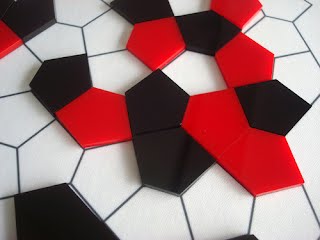  © Markus Hagenauer. Left, the game overall, Middle, in detail, and Right, Hagenauer playing at the Nestorgames booth at Essen, Germany, 2013. (A major, annual four-day board game trade fair.) © Markus Hagenauer. Left, the game overall, Middle, in detail, and Right, Hagenauer playing at the Nestorgames booth at Essen, Germany, 2013. (A major, annual four-day board game trade fair.)In short, it appears to be of the same idea as Blockbusters, but rather played on a Cairo tiling grid rather than hexagons, with a slightly different twist, of an adjacent path. The game is from 2012. In 2013 it was a nominee for the ‘Golden Geek Best Abstract Board Game’. No indication is given as to how successful this has been, or of units sold. The promotional material/rules states incorrectly (as to the geometry): The Cairo pentagonal tiling is a dual semiregular tiling of the Euclidean plane. It is given its name because several streets in Cairo are paved in this design. The quote is taken from Wikipedia, of which the Cairo page is near risible, riddled with errors. Hagenauer makes a reference in the promotional material/rules to the Cairo association with: The Cairo pentagonal tiling is a dual semiregular tiling of the Euclidean plane. It is given its name because several streets in Cairo are paved in this design. Therefore, the use of the Cairo tiling is here purposeful. Contrary to the statement as given by the promotional material/rules as to the geometry, with ‘dual semiregular tiling’, the pieces appear to be equilateral, although the actual pentagon is not directly stated. Somewhat unusually, Hagenauer does not appear to have a website or an extensive presence on social media. He is not on Twitter, with a friend request required on Facebook. Rather, he promotes his work on BoardGameGeek and Nestor Games. I contacted Hagenauer for photo permissions and other matters as to his interest in the Cairo tiling on BoardGameGeek’s internal email facility, and although he replied on 16 November 2017, with permission, he was not particularly forthcoming on his interest in general, and so I thus did not pursue this any further with him. Background Markus Hagenauer (From BoardGameGeek, with minor corrections in English and spelling) Markus Hagenauer was born in 1982 in Freilassing (Bavaria). He studied architecture in Munich from 2002 till 2008 and in this period he began to design board games. He now lives near Salzburg where he works as self-employed architect and game designer. He also occasionally teaches architecture as well as game design in an educational program for highly gifted youths. In 2010, his first game Topology was published by nestorgames. His game Eisberg is one of the 5 children's games nominated for the "Internationaler Landespreis für Spielkultur 2010", an international game designer award, staged by the Austrian state Steiermark. (From BoardGameGeek, duly adapted from two discussions with minor corrections in English and spelling) Nestorgames is an independent board game publishing company in Spain run by Néstor Romeral Andrés. They primarily publish small abstract strategy games, focusing on original games but also including classics like Go, Chess, Backgammon, etc. Thanks to innovative manufacturing and packaging methods, nestorgames' games can be carried away and stored easily, as they can be bent and squeezed. Moreover, they occupy very little room and are very light. They are manufactured one by one by Néstor himself. BoardGameGeek BoardGameGeek is an online forum for board gaming hobbyists and a game database that holds reviews, images and videos for over 101,000 different tabletop games, including European-style board games, wargames, and card games.
https://www.nestorgames.com/rulebooks/CAIROCORRIDOR_EN.pdf (rules) https://boardgamegeek.com/boardgame/137173/cairo-corridor (the main page on BoardGameGeek) https://boardgamegeek.com/thread/932485/cairo-corridor-little-bit-theory (an mathematical analysis, by Carlos Luna) Original entry 21 November 2017, of a six-line entry, excluding the title and two links, with three pictures. Revised and greatly expanded 4 February 2020. Crowne Plaza Hotel, Den Haag, The Netherlands © Christian Perfect-Lawson Panelling, Bayer Office, Buenos Aires, Argentina More pictures and detail are at: https://officesnapshots.com/2018/10/18/bayer-offices-buenos-aires/ Picture credits Contract Workplace, photographer Andrés Negroni. Thanks to Celeste Grecco of Contract Workplaces for permissions. © Contract Workplaces Fabrics, JAB Anstoetz Group, of Germany JAB Anstoetz Group, of Germany describe themselves as ‘medium-sized family business that has stood for stylish living and been associated with precious fabrics since 1946’. The size is somewhat of an understatement, as the company employs 1,300 people! Their products range from sunshades, wallpapers, floors and furniture. They have a searchable website. They market the Cairo tiling as a fabric simply titled ‘Penta’ (a common description, often seen in floors and wall tiles)’, 100% polyester. This is available in three colours, or is at least stated as such; the page merely asserts this but does not show. This is easily available, with worldwide distribution; there are over 100 outlets in the UK alone. I must admit, despite such a widespread presence in the UK, I had never heard of them until now! It is not known when the Cairo tiling was introduced into their range. No mention of the connection as to the Cairo association is made and so whether the use of the Cairo tiling is purposeful or accidental, the latter in the sense of a generic pentagon tiling is unknown. Likely they are unaware of this association. The angles and dimensions of the tile are not known. I did not contact the company, judged that they would likely not respond, fairly or unfairly, to a foreign, non-commercial query. Company details and background Josef Anstoetz writes the first chapter of the company history. Under the name JAB – the abbreviation for Josef Anstoetz Bielefeld – the merchant uses his affinity for textiles and in 1946 opens a wholesale company for decoration and upholstery fabrics. After just three years the business is so successful that the rented premises in the "Spinnerei Vorwärts" have become too small. To enable further expansion the company moves to Rohrteichstraße 35a. The year 1955 is overshadowed by the sudden death of Josef Anstoetz. As his successor, Heinz Anstoetz takes over the management of the flourishing company. In 1959 the foundation stone is laid for a new building in Bielefeld-Oldentrup. Potsdamer Straße 160 becomes the new headquarters of JAB. The first showrooms are opened in Germany. In 1961 the focus is on the systematic development of the export market. The high-class home textiles and upholstered furniture of JAB also arouse great interest beyond the German borders. With the opening of JAB International Furnishings in 1979, the family business establishes itself in the British interior market. In 1996 Heinz Anstoetz celebrates his 50th company anniversary and then retires from operational business life. After his death in 1998, the company is renamed JOSEF ANSTOETZ KG. A series of takeovers and acquisitions continues in the 2000s and to the present day. The company continues to grow and now employs 1,300 people. https://www.jab.de/gb/en/Collection/Perla/PENTA/p/9-7811-070 Entry 3 October 2019 Panels, Laminam Star Maker, by Mac Stopa of Massive Design, Poland The somewhat curiously named ‘Laminam Star Maker’, by Mac Stopa of the Polish architectural practice Massive Design (founded 1996), is described as a ‘quartz-based panel’, and makes use of the Cairo tiling as ‘small elements’, so small that from any distance that they are not discernable! This is described as: Laminam Star Maker is a three-dimensional puzzle made up of pentagonal stars, built into a larger-scale, hexagonal tessellation However, as such, it's not a puzzle in the conventional sense and there are no stars (or at least as I can tell)! The panels are 100cm x 300cm, which can be divided into three modular 1m x 1m tiles. By moving or turning adjacent tiles (as seen in the video below), many multiple geometric expressions are achieved. These large, thin and perfectly flat stain-resistant quartz panels are ideal for floors, walls and stairs in public areas and in residential projects and for both indoor and outdoor applications, including elevations in large scale architecture. The Laminam Star Maker slab won the highest award in the Red Dot Award: Product Design 2016 competition (called as the Oscars of Design). The Red Dot jury granted this product the most prestigious ‘Red Dot: Best of the Best’ award. The winning product has been developed in cooperation with Laminam Poland, who manufacture the panels. The first building in which the Laminam Star Maker slab was used is the modern office complex Warsaw Spire, Poland (see ‘As Architecture’ page).
As to technical matters, Laminam sintered quartz is a composition of natural materials, and in particular quartz, shale clays, granite rocks and ceramic pigments. Granules from the above raw materials are first pressed. Then, innovative sintering granulate is used, which is fired at a temperature of 1220 degrees. This method creates large-format Laminam boards that are perfectly flat and can be cut to a specific size with very high accuracy. Stopa can undoubtedly be described as an enthusiast of the Cairo tiling, having used it extensively in a variety of architectural projects, great and small. (Another instance is at the Ghelamco Arena, Belgium), and on clothing and wallpaper too. In addition to the orthodox presentation, these also involve variations of the design, where warping is evident.) However, there is no mention of the connection as to the Cairo association is made on the site and elsewhere, and so whether the use of the Cairo tiling is purposeful or accidental, the latter in the sense of a generic pentagon tiling is unknown. But Stopa must surely unaware of this association. Indeed, it may very well be stated, but if so among the vast amount of writings/publicity available on this project I have not been able to find this. I have previously contacted the practice (of 2015) in regards of the Ghelamco Arena occurrence, and of which although I received a polite and helpful reply, this was relatively brief, and would appear likely to have been overseen by office personnel rather than Stopa himself. My email primarily concerned photo permissions, rather than matters of his knowledge of the Cairo tiling as such, although I did mention the Cairo tiling by name. I should have been more specific! Although it would indeed be interesting to hear more details why he favours the Cairo tiling so much, in the light of this reply I have decided not to pursue further queries. About Mac Stopa Mac Stopa is an award-winning architect and designer, whose work spans several design disciplines: architecture, interior design, industrial design, art, graphic design and fashion. He is known for designing modern, innovative and functional interiors that reflect and enhance a company’s corporate image. The practice has won 66 international design awards. It is stated that he has an interest in mathematics and geometry. He seems to have acquired a degree of fame, with many published articles on him and interviews. He has an extensive social media presence on Facebook and YouTube. Stopa (and his wife, Dana) both seem to be lively characters, with their designs modelled by themselves on (colourful) clothing. He is also an electric guitar player and a music composer! About Laminam Laminam is a producer of large format plates made of sintered quartz. The company was founded in 2001 (by whom is not stated) and for several years has built an extremely strong position in the broadly understood ‘home and interior’ industry. Its products are known all over the world, and for several years the brand is also present in Poland. In Warsaw, you can visit the only Italian showroom in this part of Europe. http://massivedesig.nazwa.pl/Awards/star-maker-by-mac-stopa-for-laminam-wins-red-dot-design-award-best-of-the-best-2016/
https://www.youtube.com/watch?v=aRM4Ei7f3ls&feature=youtu.be
Cairo tiling featured throughout, 2.25 minutes
http://laminam.com.pl/component/k2/47-aktualnosci/red-dot-star-maker| 'Pedestal', by Buzon, UK As alluded to above, this is merely an illustration, and so not unnaturally Buzon do not discuss this as paving in any way, and so, therefore, the lack of detail is entirely understandable. Unlike other entries here, I do not in the circumstances unfairly castigate them for a lack of detail on the Cairo tiling. Background Buzon, founded by Claude Buzon in 1987, is the world leader in the manufacture and distribution of adjustable pedestal systems for the construction of raised floors, external terraces (paving and decking) and grating systems. Towel, Royalton Negril Hotel, Jamaica An instance of a towel, at the Royalton Negril Hotel, Norman Manley Boulevard, A1, Negril, Jamaica (an exact address is given for the mathematical tourist). Background details here of the Cairo tiling itself are essentially non-existent, although the details of the hotel are well documented, albeit who or what ‘Royalton’ is unclear. What with parent groups, subsidiaries, and spin-offs all makes for trying unravelling, at least of the time I desire to devote to this. Be all as it may, the Royalton brand is attached to a string of hotels, mainly across the Caribbean. The hotel opened in 2017, and so this a recent sighting. Whether the towel is a one-off, in-house feature, in a single room or across the Negril hotel, or others in the group is not clear; certainly, I have not found other instances. Exactly which room is unclear. One of the pictures at least is of the Presidential terrace suite, below. Another picture shows identical towels on adjoining beds. But surely the towels must be seen throughout the rooms? It must surely have been made as a commercial product, and so it is highly unlikely that there is this but this in effect single instance. The colouration is of the brown towel itself, with the pentagons in a lighter colour. Unfortunately, all the pictures show the towel in context with the room surroundings, without a closeup view, and so establishing the angles and side lengths of the pentagon are impossible. Presidential terrace suite No mention, unsurprisingly, of the connection as to the Cairo association is made on any of Royalton’s pages, which is perfectly understandable in the circumstances, and so whether the use of the Cairo tiling is purposeful or accidental, the latter in the sense of a generic pentagon tiling is unknown. I did not contact Royalton Negril or the group itself, judged that for a non-commercial query to a major chain I would likely not receive a reply. I might just add that this was found entirely serendipitously! Upon a casual read of my Google news feed of a story from the BBC (December 2018), I happened to notice the tiling. How about that; even when I was not purposefully seeking, I still nonetheless find it!
Background Details Royalton Royalton Luxury Resorts are the new generation of 5-star resorts offering the ultimate in all-inclusive vacations. Royalton Negril Nestled on a breathtaking beach, this resort masterfully blends Jamaica’s vibrant culture with a luxury experience featuring top quality features, great attention to detail and exceptional personalized service. This is a 5-star hotel, costing from £416 a night! I won’t be staying... Negril, Jamaica Negril is a small (population 6,900) but widely dispersed beach resort town located across parts of two Jamaican parishes, Westmoreland and Hanover. It’s known for its miles of sandy beaches on shallow bays with calm, turquoise waters. https://www.royaltonresorts.com/royalton-negril Amazon Banner, Amazon UK An instance of a banner, at Amazon, UK. This sighting came to my attention as a result of a tweet on 2 March 2018 by Vincent Pantaloni, a renowned French mathematician (and enthusiast of the tiling). Background details here of the Cairo tiling itself are non-existent. Whether this is a one-off usage by Amazon is unclear. As such, I was unable to find similar banners. Does Amazon routinely use geometrical images for banners (or indeed others)? The pentagons appear to be equilateral, or at least in intent; most are, whilst a few others, to the right of the avatar, are not. Likely, the artist here was simply careless. The colouration is of four pastel blues and white, seemingly coloured randomly. No mention, unsurprisingly, of the connection as to the Cairo association is made here, or the artist/designer, and so whether the use of the Cairo tiling is purposeful or accidental, the latter in the sense of a generic pentagon tiling is unknown. I did not contact Amazon, judged that for a non-commercial query to such a large company I would likely not receive a reply.
Silkscreen Prints, by Holly Alderman and Arthur Loeb An instance of eight silkscreens, ostensibly by Holly Alderman and Arthur Loeb (1923-2002), although the exact role each has played here is unclear. In short, Alderman is an artist and Arthur Loeb a mathematician, of which they collaborated on this series of artworks, in 1983, whilst both were at Harvard University. Alderman was Loeb's assistant at Harvard for three years (1978-1981). I suspect that Alderman did the artwork, influenced by Loeb, who has a particular interest in pentagon tilings, among other tiling matters. A chapter in his book discusses them and shows an unaccredited Cairo tiling [1]. Background details in a generalised sense are detailed on the Rhode Island School of Design (RSID) site, albeit no mention is made here, or indeed elsewhere, of the Cairo tiling association and so whether the use of the Cairo tiling is purposeful or accidental, the latter in the sense of a generic pentagon tiling is unknown. However, as 1983 was still relatively early since the first recorded attribution (James Dunn, in 1971, with only five references up to 1983, albeit some popular that he should have been aware of), it may very well be that Alderman and Loeb were unfamiliar with the association. Alderman and Loeb collaborated on other mathematical silkscreens that present all infinite tessellating symmetry systems possible in the plane, of which the Cairo tiling played a prominent part, appearing eight times, as wireframes, in a variety of colourings and presentations. These can all be seen on the RSID site, see sections 5 and 6. Each print is described in a most simple manner, without any mathematics, as exemplified by the first instance: Loeb Silk-screen print. Holly Compton Alderman, Harvard University, Arthur Loeb, Harvard University. Exhibition Date 1983. Description cream paper, orange and double pink honeycomb overlay. These tessellations were exhibited internationally, of which the RSID site states: 24 limited editions exhibited in the Design Science Studio first in 1983; at the International Symmetry Congress at the Hungarian National Gallery in 1984; and, at Currier House, Harvard in 1990. Whether this includes the Cairo tiling instances is unclear. As alluded to above, the angles and side lengths are not given. However, it would appear to be of an equilateral pentagon. I contacted Alderman in 2014, but she did not reply. I did not contact Loeb, his 2002 passing preceding my more recent exhaustive study of the tiling, beginning in 2009. Background Details Holly Alderman Alderan, of Boston, US is a distinguished graphic designer, producer of art decor collections, unique Hamlen Chinoiserie and French Dufour scenic wallpaper and prints. She designed covers for the Phonebook local telephone books and wrote feature profiles for community newspapers. She was first appointed as a teaching assistant in art at the young age of 16. She is still active in art circles to the present day (2019). Arthur Loeb Arthur Lee Loeb (1923-2002), was a Dutch scientist and crystallographer. He arrived at the U.S. during World War II, completed his undergraduate studies at the University of Pennsylvania in 1944, and his Ph.D. in Chemical Physics at Harvard University in 1949. Loeb taught at the Massachusetts Institute of Technology in the early part of his career. He later taught at Harvard, where he was a senior lecturer in the Visual and Environmental Studies Department. His interest in ‘Visual Mathematics’ and ‘Design Science’, led to lifelong collaboration with innovators such as R. Buckminster Fuller and M. C. Escher. Loeb was a founder and first Vice-President of the International Society for the Interdisciplinary Study of Symmetry (ISIS-Symmetry). The Rhode Island School of Design carries a collection on design science in his name. He is buried at Mount Auburn Cemetery in Cambridge, Massachusetts, and his grave contains the inscription ‘Beloved teacher, scientist & musician’. [1] Loeb, Arthur. Concepts & Images Visual Mathematics. Design Science Collection. Birkhäuser Boston 1993. Especially see Chapter 9, pp. 89-100 ‘Pentagonal Tessellations’, featuring an unaccredited Cairo tiling, https://digitalcommons.risd.edu/loeb_symmetryportfolio/ Stencil Prints, by Andrew Theis An instance of stencillings, by Andrew Theis, a computer programmer and artist of Seattle, US. Theis makes extensive use of the Cairo tiling in this work, so much so that a count is next to impossible; he must have hundreds of works (despite each print taking around an hour and a half)! Indeed, for the sheer number of unique instances, with colour variations on the theme, and with secondary aspects such as spirals and other configurations, he is by far the most numerous artist. These can be seen on his Tumblr page. However, it is not a particularly easy read, with so many posts, with other of his interests interspersing at times. Be all as it may, he states that his interest was piqued by seeing what I later established, upon correspondence, as a Jali: I first saw this [Cairo pentagon tiling] pattern at my hometown art museum from a 16th century stone screen. I freehanded the basics of the pattern and then sketched it out formally on graph paper to understand how it was constructed. However, despite the impression here of a 16th-century instance (and so of the utmost historical importance), this has to be qualified. Rather, the design is with a secondary, subsidiary pattern, often seen on Mughal Jalis (a perforated screen). Therefore, quite how best to interpret the Jali artist's intention is unclear. Strictly, this is not a Cairo tiling, but undoubtedly, the Cairo tiling is indeed seen among a ‘fused pentagon’ configuration. Indeed, Theis’s work, from 2013 onwards, largely follows this model. Theis makes numerous references to the Cairo association and so the use of the Cairo tiling is here purposeful. The type of the pentagon (sides and angles) does not seem to be categorically stated. However, they appear to be equilateral. Background Little biographical detail is seemingly available. Although he has a LinkedIn ‘about’ page, this focuses on his art rather than himself. All that is available on him is as discussed as above. https://andrewtheis-art.tumblr.com/ https://andrewtheis-art.tumblr.com/post/67020711483/i-dont-really-have-a-name-for-this-series-the https://www.linkedin.com/in/andrew-theis-4908b536 Entry 17 December 2019 'Conceptual Spatial Puzzle', by Mark Cabrinha Mark Cabrinha, a US architect at California Polytechnic State University, has used the Cairo tiling extensively in his work, in a variety of ways, of what he describes as ‘... a conceptual spatial puzzle’, although this is not a puzzle in the ‘conventional’ sense, with offshoots. This then morphs into a board game, ‘Cairo Commons’, and then reference is made to a table in its own right! It is most uncertain how best to describe the core premise! It is not exactly clear as to the year, but it appears to be c. 2015. Be all as it may, this usage reflects his interest in fabrication, where use is made of the Open Source Learning Kit. He has written extensively on this, as evinced on Instructables, see site below. He states: I chose the Cairo tessellation as it is unique, but not alone, in that it develops one shape - the hexagon - from a collection of smaller shapes - the pentagon. Moreover, the proportion of these modules worked fairly well as a room, and most of all, suggested a strong cluster arrangement as indicated previously. However, my primary concern was if enough variation could be developed from the same pentagonal shape. To test this, I created a board game: Cairo Commons. In fact, in researching Cairo tessellation, I came across a board game based on the Cairo tessellation called Cairo Corridor. While much inspired by Cairo Corridor, the goal of Cairo Commons is to organize clusters of enclosed spaces such as classrooms (in black) linked with open flexible collaborative spaces (in white). Adding a rule that each black tile must share an edge a space on the board, provided for an exposed wall to allow natural light into the space (if this were a school). By creating a game, I was able to develop very quickly a variety of shapes triggering new possibilities I had not considered, and even more, by putting the game out for others to play further possibilities were developed (see time lapse). In short, this convinced me that even with a standard tile (module), there was indeed plenty of room for variation. Creative Commons Despite the extensive writing, I could not find the angles and side lengths. However, it is of the ‘long base’ type. Direct reference is made to the Cairo tiling and therefore the use of the Cairo tiling here is purposeful. Pleasingly, he describes what attracts him to the tiling in terms of aesthetics, noting the vertical and horizontal sub hexagons, see the Vimeo video below. I did not contact Cabrinha, although given his undoubted interest I perhaps should have done! But save for determining the angles and side lengths, there seems not much more he could add, given the extensive writing. Background Details Mark Cabrinha earned a M.Arch degree at the University of Illinois in Chicago and his undergraduate degree at Cal Poly (’95). A registered architect, Mark practised as a designer and project architect for OWP/P Architects, focusing on educational environments, mixed-use housing projects and assisted living facilities. He taught at several institutions and was a research fellow at Ball State’s Institute for Digital Fabrication. A doctoral candidate at Rensellear Polytechnic Institute, Mark is researching the impact of digital fabrication on design culture for his dissertation, “(In)forming: Material Tactics and Digital Strategies in Design Education.” Instructables https://www.instructables.com/id/Conceptual-Puzzles-the-Open-Source-Learning-Lab-Ki/ The project in detail, and as a PDF. Instructables is a website specializing in user-created and uploaded do-it-yourself projects, currently owned by Autodesk. It was created by Eric Wilhelm and Saul Griffith and launched in August 2005. Instructables is dedicated to step-by-step collaboration among members to build a variety of projects. Users post instructions to their projects, usually accompanied by visual aids, and then interact through comment sections below each Instructable step as well in topic forums. 18-second speeded-up video, of a crowd assembling the pieces. 22.06-minuted video, of an AiR Presentation. Very nice indeed! The Cairo aspect begins at 7.22 and then continues throughout. http://opensourcelearninglab.net/about-us/ The Open Source Learning Lab is an undergraduate architecture design studio at Cal Poly, San Luis Obispo, led by Professor Mark Cabrinha. The term “Open Source Learning” is inspired by David Preston, a local area high school teacher with a national vision. AiR Presentation A multi-modal presentation: PowerPoint, video, interactive discussion. Pentagon Pen, by Elephant & Coral An instance of what is probably best called as ‘display packaging’ of a ‘Pentagon Pen’, by London designer Sam Hecht (1969-) of Industrial Facility for the Singaporean pen company Elephant & Coral, of 2011. The pen is available as a fountain pen or rollerball for £695. This is a limited edition, with only 200 Fountain pens are available and 100 rollerballs made. The packaging is obviously in conjunction with the five-sided barrel pen. The premise here is of an upmarket product, made from polished Ebonite - a very hard rubber - that is shaped and formed by hand. The pentagonal form itself is made of an odd number of facets that only a skilled craftsmen can produce. The nib is made from 18K gold, with a specially commissioned nib design by the artist and naturist Tham Pui San. Curiously, I have not been able to determine the name of the person who founded the company. I did not contact Sam Hecht or Elephant & Coral, judged likely that I would not receive a reply.
No mention of the connection as to the Cairo association is made on the Elephant & Coral page and so whether the use of the Cairo tiling is purposeful or accidental, the latter in the sense of a generic pentagon tiling is unknown. Likely, given no apparent mathematical interest, all the people involved are unaware of this association as this would have otherwise have been stated. Background Elephant & Coral Elephant & Coral was established in 1996 as a small, fine pen company in Singapore, and is a leader in the retail of fine writing instruments. The name ‘Elephant & Coral’ is derived from a place in London, Elephant & Castle, where the founder spent some of his best years of education in England. In their endeavour to bring forth different writing experiences, they commissioned a pen collection from Industrial Facility. Elephant & Coral believes that writers in any era need to be encouraged and motivated to extend their dreams. Since their inception they have provided pens to established and emerging writers in support of their published literary works (fiction or poetry). With a symbolic gesture they honour and encourage many of the unsung heroes who continue to inspire us through their writings. Sam Hecht/Industrial Facility Industrial Facility is a design office based in London and formed by designers Sam Hecht and Kim Colin in 2002. They have developed projects for among others, Herman Miller, Mattiazzi, Issey Miyake and Muji. What binds their work together is a belief that simplicity can be inspirational. They have won numerous awards including ‘Design of the Year, 2011’ for furniture, awarded by the Design Museum; Designers of the Year 2010, by Elle Decoration; and the IF Hannover Gold Award on three occasions. Drapery/Curtains, by Softline Home Fashions Inc. An instance of drapery/curtains, of which there is a subtle difference (also available as matching decorative pillows, discussed separately, see the dedicated entry) from Softline Home Fashions Inc., of the US, a leading distributor of ready-made curtains, decorative pillows and fabrics. Note that Softline is not to be confused with a Denmark company of the same name and product. However, beyond these bare details, little more is known. Research is hindered by the nature of the business, in which Softline retail only to the trade. It is not possible to see the products on their site without creating a trade account. However, from other retail outlets, in general, pictures are readily available. However, the drapery/curtains here are only to be found on the ‘Defining Elegance’ site (the best source) as ‘Softline Home Fashions Drapery Dijon Draperies and Curtains’ (the decorative pillows are more common, seen at a variety of outlets). The page informs me that the product has been discontinued (date unknown). The product is described as ‘Jacquard geometric weave. Photo shows Dijon in Orange in the grommet style. Available in 3 styles: Rod Pocket, Back Tab (soft pleats), or Grommets... Matching decorative pillows’. It is (or was) available in Apple Green, Grey, Natural, Orange, and Sapphire Blue (which matches the accompanying decorative pillows). Possibly remaining stocks are available elsewhere, as the decorative pillows are still available, albeit of a single source (Wayfair). No mention of the connection as to the Cairo association is made on the Softline or Defining Elegance page and so whether the use of the Cairo tiling is purposeful or accidental, the latter in the sense of a generic pentagon tiling is unknown. Likely the (non-stated) designer is unaware of this association as this would have otherwise have been stated. Almost certainly, it was just a random pentagon design, perhaps chosen for its aesthetics. Given the relatively recent formation of the company, in 2001, the design is thus not ostensibly old, loosely defined.
I did not contact Softline or Defining Elegance, judged likely that from a major trade retailer and a discontinued product respectively, I would not receive a reply to a non-commercial query.
Background Softline Home Fashions Inc. Softline Home Fashions Inc., founded by brothers Jason Carr and Rodney Carr in 2001, is a leading distributor of ready-made curtains, decorative pillows and fabrics by the bolt. The annual business journal Home & Textiles Today ranked Softline in the “Top Five largest drapery suppliers in North America”. Softline has multiple distribution centres in the USA and Canada, with showrooms in: Gardena, CA, High Point, NC, New York, NY, and Montreal, Canada. Softline are one of the fastest growing home textile companies in the United States and Canada. Having celebrated its 10 year anniversary in 2011, it has grown into a multi-million dollar organization with a total of 150,000 square feet of warehouse and office space. Softline also has offices in Hangzhou, China and in Mumbai, India, facilitating domestic and international shipping, quality control and competitive pricing. Softline’s products are also distributed Internationally to top retailers in Mexico, Puerto Rico, New Zealand, Australia and Central and South America.
Defining Elegance Sue Ticotin, with a passion for sewing and fabrics, along with her husband, Lawrence, developed the DefiningElegance.com website of luxury goods for the home, of 2005. They are a small business and take pride in the fact that it has remained family-owned.
http://softlinehome.com/ (Softline home page, no Cairo tiling) https://www.definingelegance.com/aboutus.html (Defining Elegance) Entry 16 December 2019 Decorative Pillows, by Softline Home Fashions Inc. An instance of decorated pillows (also available as matching drapery/curtains discussed separately, see the dedicated entry) from Softline Home Fashions Inc., of the US, a leading distributor of ready-made curtains, decorative pillows and fabrics. Note that Softline is not to be confused with a Denmark company of the same name and product. However, beyond these bare details, little more is known. Research is hindered by the nature of the business, in which Softline retail only to the trade. It is not possible to see the products on their site without creating a trade account. However, from other retail outlets, in general, pictures are readily available, albeit the product has seemingly been discontinued. The pillow is now seemingly available only from a single outlet, namely Wayfair.com (where it is titled ‘Dimas 18" Decorative Pillow’). It is out of stock at Defining Elegance, Macy’s (where it is titled ‘Diane’ and Walmart. The pillow is described on Defining Elegance (the best source) as ‘Softline Home Fashions Dijon Decorative Pillow’ (echoing the drapery/curtain description). The page informs me that the product has been discontinued (date unknown). It is (or was) available in Apple Green, Grey, Natural, Orange, and Sapphire Blue (which again matches the accompanying drapery/curtains). Decorative Pillow in Sapphire BlueNo mention of the connection as to the Cairo association is made on the Softline and Defining Elegance pages and others, and so whether the use of the Cairo tiling is purposeful or accidental, the latter in the sense of a generic pentagon tiling is unknown. Likely the (non-stated) designer is unaware of this association as this would have otherwise have been stated. Almost certainly, it was just a random pentagon design, perhaps chosen for its aesthetics. Given the relatively recent formation of the company, in 2001, the design is thus not ostensibly old, loosely defined.
I did not contact Softline or Defining Elegance (and others, as above), judged likely that from a major trade retailer and a discontinued product respectively, I would not receive a reply to a non-commercial query.
Background Softline Home Fashions Inc. Softline Home Fashions Inc., founded by brothers Jason Carr and Rodney Carr in 2001, is a leading distributor of ready-made curtains, decorative pillows and fabrics by the bolt. The annual business journal Home & Textiles Today ranked Softline in the “Top Five largest drapery suppliers in North America”. Softline has multiple distribution centres in the USA and Canada, with showrooms in: Gardena, CA, High Point, NC, New York, NY, and Montreal, Canada. Softline are one of the fastest growing home textile companies in the United States and Canada. Having celebrated its 10 year anniversary in 2011, it has grown into a multi-million dollar organization with a total of 150,000 square feet of warehouse and office space. Softline also has offices in Hangzhou, China and in Mumbai, India, facilitating domestic and international shipping, quality control and competitive pricing. Softline’s products are also distributed Internationally to top retailers in Mexico, Puerto Rico, New Zealand, Australia and Central and South America.
Defining Elegance Sue Ticotin, with a passion for sewing and fabrics, along with her husband, Lawrence, developed the DefiningElegance.com website of luxury goods for the home, of 2005. They are a small business and take pride in the fact that it has remained family-owned.
http://softlinehome.com/ (Softline home page, no Cairo tiling) https://www.definingelegance.com/aboutus.html (Defining Elegance) https://www.wayfair.com/decor-pillows/pdp/softline-home-fashions-dimas-18-decorative-pillow-fqs2727.html (Wayfair)Entry 16 December 2019 Women's Jacket, by Marks and Spencer Collection An instance of a woman’s jacket, from Marks & Spencer, an upmarket UK brand that specialises in selling high-quality clothing, home products and food products. This is branded as ‘M&S Collection’, one of seven such brands. No other detail is given on the item itself, or a dedicated brand Marks & Spencer Wikipedia page. Researching this is problematical. The jacket was found by chance, in a charity shop, upon a more or less weekly Saturday pattern/tessellation hunt, as is my wont whilst ‘normal’ shopping. Therefore, the source is not able to be directly consulted, and the age is speculation, albeit likely not of the past few years, given the nature of the finding. However, it can hardly be ‘old’, loosely defined. Searching on Marks & Spencer’s website for women's coats and jackets, of which there is a dedicated section, of 167 items, was fruitless. Generally speaking, such geometric designs are uncommon in their range. I am uncertain as to if this includes only the most recent collections, of this year, or shows earlier years. Further, general searches, unsurprisingly, also proved fruitless, albeit I only paid lip service to this here, of just a few minutes searching, judged highly unlikely that I would find this. Overall view in shop Mid-Range View, left, Detail, right I did not contact Marks & Spencer, judged that they would likely not respond, fairly or unfairly, of a non-commercial query, compounded by a lack of any real detail to assist in the matter. Of note here is the presentation of the pentagons, of which at first glance the Cairo tiling is not readily clear; indeed, I had to do a double-take to convince myself! Simply stated, the pentagons have been in effect heavily outlined, resulting in each pentagon being in ‘isolation’. However, to me at least, the source is indeed a Cairo tiling. First seen 21 December 2019. Entry 30 December 2019 Laurel and Hardy in 'Our Relations', Bedsheet An instance of a bed sheet or blanket, of a Laurel and Hardy movie still taken from ‘Our Relations’, of 1936, in which they are talking in bed (one of many such instances in their films), albeit more accurately it can be described as a ‘near miss’ as it is not strictly a Cairo tiling. More exactly, this can be seen to be of the related bow tie tiling, in which the centre has a ‘division’ of sorts, albeit not joining the vertices to form a true Cairo tiling, hence a ‘near miss’. Nonetheless, the impression is indeed of a Cairo tiling, and so is thus included here. To the best of my knowledge, there are no other appearances of the sheet/blanket in any of their other films. Incidentally, this was a chance finding, of an oversized poster whilst I was idly browsing at a local antique/collectors shop. I distinctly recall my excitement when my eyes alighted on it i.e. with a celebrity association, as well as a good age, albeit soon tempered upon closer inspection! Incidentally, Laurel and Hardy are among my favourite comedians. Laurel and Hardy Background to the movie https://www.youtube.com/watch?v=7Xj6WsZkZ44 The scene featuring the bedsheet/blanket is at 40.27-42.02. It is always portrayed peripherally and is essentially static, save for the last few seconds when it is moved, albeit of an insignificant nature. First saw c. 7 March 2017. Entry 31 December 2019 Equilateral Pentagonal Prism, by Donald G. Wood, Space Enclosure Systems An instance of an ‘equilateral pentagonal prism tiling’ by Donald G. Wood (1922-2011), a professor of industrial design in the School of Art at Ohio State University, Columbus, Ohio, US. This is pictured as an artefact in Space Enclosure Systems, Bulletin 203* in that context, and is dated c. 1968, from the date of publication. It is discussed and illustrated in two places, pp. 3-4, 30-31, and of which Wood explicitly credits Percy MacMahon in New Mathematical Pastimes and H. M. Cundy and A. P. Rollett in Mathematical Models (who also credit MacMahon for their image) as the equilateral pentagon source, with the ‘extension’ of a prism seemingly his (Woods) idea. Figure 27 What exactly is the function, purpose or premise of the ‘Engineering Experiment Station’ (EES), is not clear. Details are essentially non-existent. That said, it appears to be from a range of scientific disciplines, from the small number of bulletin covers I am aware of. This is despite the EES having a Facebook page, of which nothing is given about them! However, from this, it still seems to exist. The best that can be gleaned, from a dead link, is: The board of trustees of the Ohio state university shall establish an organization to be known as the "engineering experiment station of the Ohio state university," ... Wood, concerning Fig. 3 on p. 4, makes a curious observation as regards tilings with equal-length sides, pp. 4-6, with the (later to be known) Cairo equilateral tiling being one of five such instances of a series or sequence, namely the equilateral triangle, square, Cairo equilateral pentagon, hexagon, rhomb; as such, I do not recall seeing this simple observation elsewhere. Is this significant? Page 3, left, and Page 4, right As the Bulletin, perhaps more properly described as a booklet, predates the first known reference to the Cairo tiling by James Dunn in 1971, naturally no reference is made to the Cairo tiling in the book. Curiously, the bulletin is not dated, but from elsewhere is dated 1967 or 1968. The work is seemingly little known, which only occasional references, such as by Goldberg and Williams, below. Another curiosity here is of the nature of the Bulletin. The indications here, of Nos. 203 and 205, are of a series, but if so, then the other numbered issues are not readily found! (Or at least an initial look; judged appropriate in terms of time expanded. Another, unrelated to Wood’s instance is ‘Fluoride Investigations’, No. 76. But I very much doubt that even with a more extensive search these would be found. For what it is worth, the Bulletin ran from 1906-1983. What exactly is the function, purpose or premise of the ‘Engineering Experiment Station’ (EES), is not clear. Details are essentially non-existent. That said, it appears to be from a range of scientific disciplines, from the small number of bulletin covers I am aware of. This is despite the EES having a Facebook page, of which nothing is given about them! However, from this, it still seems to exist. The best that can be gleaned, from a dead link, is: The board of trustees of the Ohio state university shall establish an organization to be known as the "engineering experiment station of the Ohio state university," ... Wood, concerning Fig. 3 on p. 4, makes a curious observation as regards tilings with equal-length sides, pp. 4-6, with the (later to be known) Cairo equilateral tiling being one of five such instances of a series, namely the equilateral triangle, square, Cairo equilateral pentagon, hexagon, rhomb); as such, I do not recall seeing this simple observation elsewhere. Is this significant? He appears to be one of those people whose work that time has largely forgotten, somewhat unfairly so in my opinion. Open questions abound here. Did he do anything further with the Cairo equilateral pentagon, and indeed of his ‘space enclosure systems’ in general? The two bulletins are his only known publications. *The publication is titled as a Bulletin, of which I consider somewhat of a misnomer, at least by a UK definition or standards, of which to me is a short piece of writing of just one, two, or three pages. In contrast, this is a 52-page publication, which is to me better described as a booklet. Cambridge English Dictionary defines bulletin as: A short piece of news on television or radio, or a short report or news item released by an organization. A 52-page publication to me contradicts this! Be all as it may, for the sake of consistency I refer to the publication as a Bulletin throughout, although perhaps better titled as a booklet or book. Background (excerpted from an obituary on Legacy.com, of which aside from brief details in the Bulletin, is the only story of his life! However, this at least does him full, and deserving, justice). Donald Gilbert Wood passed away in his sleep on September 22, 2011 at First Community Village in Columbus. He was 88 years old. His beloved wife, Martha Adams Wood, had passed away five days earlier in the same room at First Community Village. Don was born in Columbus on October 31, 1922, the son of Homer E. Wood and Florence Berlew Wood. Don spent 30 years teaching at Ohio State. Don was a professor in the Department of Industrial Design, College of the Arts, at Ohio State starting in 1948 and was acting director for four years. He was also a potter and a freelance artist, designing furniture and displays for the OSU campus. He received numerous awards at local, state and national art competitions. He was art director of "Ceramics Monthly" magazine and wrote articles on pottery design and techniques. Don also did design work for the Ohio Historical Society and was on the board of directors of the Columbus Museum of Art. He was a design consultant for Nationwide Insurance of Columbus. Don was chairman of the Professional Design Area of the School of Fine and Applied Arts at Ohio State. He taught industrial design and was part of a research program in the Building Research Laboratory at Ohio State. The author of several articles for professional journals, Don also wrote two books on the design of space enclosure systems. Don retired from Ohio State in 1978 after three decades as a professor and designer. He was named Professor Emeritus in the Department of Industrial, Interior, and Visual Communication Design. Don was active in the Second Church of Christ, Scientist in Columbus, serving numerous terms as reader and supporting the church in administration. Brief background details on Wood in the publication. Aside from his university affiliation, it states: Wood has been a consultant art director and has marketed a tubular steel painting easel. An award-winning ceramic design artist, he is on the editorial staff of “Ceramics Monthly Magazine”. He is a free-lance designer of exhibition structures and partitioning systems. References Wood, Donald G. Space Enclosure Systems. Identification and Documentation of Cell Geometries. Bulletin 203, Engineering Experiment Station, The Ohio State University, Columbus Ohio. 52 pp. No publication date is given, although it is dated elsewhere as 1967 or 1968 (Google gives 1968, * gives 1967) Wood, D. G. Space Enclosure Systems. The Variables of Cell Packing Design. Bulletin 205, 1968, 59 pp. NOT SEEN
Gabriel, Jean-François editor. Beyond the Cube: The Architecture of Space Frames and Polyhedra. (quotes the related Bulletin 205) John Wiley & Sons Inc., 1997. NOT SEEN Goldberg, Michael. ‘The Space-Filling Pentahedra’. Journal of Combinatorial Theory (A) 13 437-443, 1972. Quotes Wood (p. 437-438, and incidentally Williams too) in Bulletins 203 and 205. Loeb, Arthur L. Space Structures. Their Harmony and Counterpoint. Springer, 1976 (NOT SEEN)
New Entry 2 January 2020. N.B. Although added to the Cairo ‘As Miscellaneous’ page as a ‘new entry’ this is not a new finding as such, as I was aware of the reference many years ago, of which I obtained the Bulletin on 11 December 2012. Rather this was discussed essentially in passing, on my ‘References’ and ‘Where is’ pages, but not effectively as an in-depth piece of writing as here. Seating 1, by Frövi, UK An instance of seating, titled ‘Nest’, from Frövi, who describe themselves as ‘a family owned British furniture company with a name inspired by Scandinavian design’. Of note is that, unlike other entries on this Miscellaneous page, this is of a single Cairo pentagon, with the premise of the possibility of a modular arrangement into the Cairo tiling (and other configurations, including a ‘central’ hexagon). This is described in their catalogue (seemingly dual with a related coffee table, below), p. 110, as: A truly configurable seating option - this geometric design is adaptable to any workspace, allowing creativity with color and shape as it can be nested together to create infinite combinations. It works as individual pieces or in modular layouts to create waiting, working or relaxing environments. Therefore, it lends itself to a host of applications across corporate or hospitality marketplaces. Office space, left, Detail, right
Note also that Frövi has an accompanying Cairo tile coffee table, placed as a separate entry. Arguably this could (and should) be combined. However, as other (modular) entries for seats and table are one-offs, I thus differentiate. Incidentally, despite the company beginning in the UK, from 1976, I was unaware of them before this entry! They have an impressive, searchable website, with catalogues made freely available, and have an extensive social media presence, including all the ‘big five’. Quite when this was introduced into their range is unclear. However, seeing as this is of the most recent catalogue, likely it is recent, loosely defined, and not old, from the beginning of the company in 1976. As I have found, like other products, each seems to have a natural lifespan before being discontinued upon a production run, in favour of the new. No mention of the connection as to the Cairo association is made on the site or their social media (or at least as I can establish), and so whether the use of the Cairo tiling is purposeful or accidental, the latter in the sense of a generic pentagon tiling is unknown. Likely, as this is not mentioned, they are unaware of this association. I did not contact the company, judged that they would likely not respond, fairly or unfairly, of a non-commercial query. Background Frövi is a British furniture company with a name inspired by Scandinavian design and ethos and were formed in 1976. Although designers names are given, it is not clear who began the company, and who effectively runs this of the present day. As market-leading manufacturers, they only use high-quality materials and invest in cutting-edge technology to create premium designs at their design studio in Oxfordshire and factory in the Cotswolds. Built for commercial environments, each piece of furniture is formulated to be robust, with the premise that every piece will deliver on quality, strength and value. Acknowledgements Vincent Pantaloni, for drawing this sighting to my attention in a 4 January 2020 Twitter post by David Swart, which featured the seat, but not the coffee table. https://frovi.co.uk/product/soft-seating/nest/ Entry 8 January 2020 Seating 2, by Dsignio/Beltá & Frajumar An instance of ostensibly an armchair, titled ‘armchair’ despite not having arms(!), a collaboration of c. 2014, between Spanish concerns Dsignio, an Integral Design Studio and Beltá & Frajumar, a furniture and upholstery manufacturer. However, quite how best to attribute the design is unclear. It appears to be of a broad equal collaboration, albeit with Dsignio leading as to the design, with Beltá & Frajumar then implementing. Further, quite how best to describe this is unclear. It is simply titled by Beltá & Frajumar as an ‘armchair’ despite the lack of arms! Further, it is seemingly described in the same breath with an ottoman option, and then which is also described as a pouffe! Beltá & Frajumar use both ottoman and pouffe singly and in combination! Therefore, quite how to categorise this is unclear. Is it an armchair, seat, ottoman or pouffe? And then there are different UK and US interpretations as to ottomans and pouffes! (Below I give UK Cambridge dictionary definitions for the sake of clarity). For now at least, I will retain the description of Beltá & Frajumar, and refer to this as an armchair in the text, despite considerable reservation. But how best to categorise for placement purposes? To me, it is not a chair or armchair. Therefore, I have decided to place under a generic ‘seat’ category. Of note is that this is the third of four Cairo tile themed furniture pieces from Beltá & Frajumar, under the same ‘Pent’ title, with others being a table (without legs), another, more lightweight table (what I title as a coffee table), and an ottoman. Each of these is shown as a separate entry for the sake of clarity. The geometry, albeit not stated, all appears to be the same in all instances. Of note is that, unlike other entries on this Miscellaneous page, this is of a single Cairo pentagon, with the premise of the possibility of a modular arrangement into the Cairo tiling (and other tiling configurations, including a ‘central’ hexagon). Some of the entries on Beltá & Frajumar are more explicit as to this possibility than others, as here. The armchair is described rather briefly by both Dsignio (generically, in context with the table) and Beltá & Frajumar (generically and specifically): Dsignio Pent is the new table that DSIGNIO has designed for Beltà. It is a modular system consisting of a pentagonal piece that can be repeated, creating countless compositions. It is a kind of puzzle to play with, looking for the result that best suits your needs. Its size has been studied to also be used as a seat, forming dynamic sets that fit different users. The finish of the pieces in natural ash provides warmth and, due to the morphology of the modules, a type of timeless design is achieved. You can also create more fun compositions using lacquer ware in different colors. And in an interview with ‘Design Daily’: We just designed dozens of grids (I love geometry) and we thought that one of them could be a modular table”. Beltá & Frajumar Beltá & Frajumar in their catalogue, discuss this in two parts, first, a generic discussion as to the Pent range, and second specific detail, of the furniture, be it table, armchair or pouffe as below: Pent is a modular system consisting of pentagonal pieces that can be repeated creating countless compositions. It is a puzzle with which to play in order to create the shape that best suits ones needs. The possibilities are endless, including use as an ottoman. and 3. Armchair and Ottoman in wood frame covered with 25 kg/m3 foam. Seating area in HR 35 kg/m3 soft foam. Important: indicate the colour of the decorative stitching required Although dimensions are given, as a diagram, this is by far from clear, and so I thus refrain from trying to interpret their intentions. No angles are not given. Dsignio has a design-led website, but is not searchable, and have a social media presence on Twitter and Facebook. Many more photos can be found on their photo page of the latter. Beltá & Frajumar, befitting their status, has an extensive website, in Spanish, English and French and is searchable, and have an extensive social media presence on Twitter, Facebook, Pinterest, YouTube, Instagram and LinkedIn. Of note is that Dsignio has a decided liking for the Cairo tiling. They have also used it for the Peronda Group, with KIN ceramic wall tiles (see dedicated page), as well as the collaboration with Beltá & Frajumar. No mention of the connection as to the Cairo association is made on either Dsignio or Beltá & Frajumar sites. Upon previous correspondence on the KIN ceramic wall tile instance (10 April 2015), in which I mentioned the Cairo connection, Patxi Cotarelo told me: It was the first time I read about the Cairo tiles, thank you for the information, it was interesting. From this, they were obviously unaware of the association, it was found by chance, as an instance of aesthetic geometry/design. Almost certainly, with Disgnio leading, Beltá & Frajumar, also has no knowledge of the Cairo tiling. An open question is to how well this has sold. As such, I have not seen any instances other than in the catalogue. Background DSIGNIO is an Integral Design Studio located in Madrid that executes international projects. It was founded by Alberto Bejerano and Patxi Cotarelo in 2002, both of them Technical Engineers of Industrial Designs and Interior Design Master. Throughout these years DSIGNIO has received several awards, highlighting three nominations for best design of the year in Spain in the last edition of the Delta awards. DSIGNIO have designed products for different companies that sell DSIGNIO´s designs in over 60 countries and exhibited them at fairs such as Milan, Paris, Moscow, Singapore and London. DSIGNIO’s projects are published frequently in the specialized press, in general media and in more than 500 design blogs. They also give lectures and courses at universities in Spain, Japan and Mexico. Beltá & Frajumar, of Yecla, Murcia, Spain, and founded in 1967, is a furniture and upholstery manufacturer for the hospitality and living sector. Born from the will of standing up for design and innovation, Beltá & Frajumar has the goal of manufacturing singular and unique objects. Each product that is developed has to keep a harmonious relation with everything it is surrounded by, the places it is used in and the users. Although it may seem unnecessary to define such everyday items as chairs and armchairs, for the sake of thoroughness and exactness I show below, and of which I include ottomans and pouffes. Cambridge Dictionary Ottoman (US): an ottoman is a form of couch that usually has a head but no back, although sometimes it has neither. It may have square or semicircular ends, and as a rule it is what upholsterers call "overstuffed", meaning no wood is visible. It may be used as a stool, footstool or as an alternative to a sofa. Pouffe (UK): a soft, round or square seat with no back or sides, used for sitting on or resting your feet on. Chair: a seat for one person that has a back, usually four legs, and sometimes two arms. Armchair: a comfortable chair with sides that support your arms. Seat: a piece of furniture or part of a train, plane, etc. that has been designed for someone to sit on. Chairs, sofas and benches are different types of seat. https://designdaily.in/the-very-versatile-pent-table-dsignio/ (no reference to the armchair, but includes an interview with Dsignio) Entry 14 January 2020 Maurits C. Escher, Cairo Tiling Periodic Drawings and Sketches First, quite best how to categorise Escher’s entry is unclear, as there are various ways of discussing this. Given his preeminence in tessellation matters, I have decided to place as according to the person himself, rather than diluting his contribution under, say, artworks per se. Maurits C. Escher (1898-1972) made extensive use of the Cairo tiling in his artworks, in various ways, first as sketches, of 1937 (of both the tile itself and representational motifs), and second as periodic drawings, prints and ceramic tiles, 1967-1968, and so all of which makes for a trying task in unravelling as a body of work. Matters are further complicated by outside influences, namely by papers by Friedrich Haag, a German pioneering crystallographer, which inspired Escher, detailed below. With so many vagaries here, this is not a straightforward task. For instance:
Detailing all the aspects here is a task that would take many days, if not weeks, of which for the premise of this page would be somewhat excessive. Therefore, I have thus decided to include the works on paper, and not ceramics (the latter of which I discuss separately, as wall tiles). Possibly a more succinct, and cohesive approach would be to differentiate between the sketches and periodic drawings, but I have decided to include both here in the discussion, albeit separated by each period of study. However, I have not unduly been slipshod or too succinct in my approach to the point of confusion or of a worthless piece of writing. Rather, I have simply compiled a piece as deemed appropriate. Undoubtedly, it can be improved at a later sitting, but to at least establish Escher’s contribution, it more than suffices. It should be stated at the onset that Escher's studies predate the modern-day attribution of this tile, of 1971, by James Dunn, and so he obviously did not associate the tiling directly with the term ‘Cairo’ in any way. Although the Cairo tiling first appeared in 1957, it was not titled as such or was known beyond Egypt, and so it is inconceivable that Escher knew of its earlier use in Cairo itself. Although Escher did not discuss this tiling in any way, one can nonetheless thus infer that it was one of his favourite (non-representational) tilings, given the relative extensive usage he made of it, and so likely he was attracted by its aesthetic features. Escher's studied the Cairo tiling in two distinct periods, of the 1937 and 1967-1968. These differ considerably in approach. The 1937 studies are essentially sketches, in combination with other studies, whilst that of 1967-1968 was that of finished, numbered periodic drawings, in preparation for other works (save for an interlacing instance), namely for Metamorphosis III and ceramic tiles. Regrettably, although Escher did not discuss this tiling in any way, one can nonetheless thus infer that it was one of his favourite (non-representational) tilings, given the relative extensive usage he made of it, and so likely he was attracted by its aesthetic features. I begin by separating the two different periods of study by Escher, as according to chronological order, given that he studied this at distinct dates, namely 1937 and 1967-1968. Unfortunately, the latter is somewhat inconvenient to unravel (at least given the time I want to devote to it), given that variations of a theme are used. Unfortunately, some ‘early’? sketches were not dated, of which I am decidedly unsure as to their chronology. Period 1, 1937 The roots of this interest date back to 1937 when Escher studied a series of papers by Haag of, ‘Die regelmässigen Planteilungen’ [3], ‘Die regelmässigen Planteilungen and Punktsysteme’ [4] (Regular Divisions of the Plane and Point Systems), and ‘Die pentagonale Anordung von sich berührenden Kriesen in der Ebene’ [5]. These were included on a list of * articles as given by Beer, his half brother. In the course of this as a general study, Escher tried his hand at reproducing his diagrams, along with experiments of his own (Schattschneider pp. 28-29). Some of the diagrams in the paper resemble the Cairo tiling, namely p. 487 [4], but with the aid of a German translation, I have established that this was not of a Cairo tiling, at least of this paper. [5] shows a Cairo tiling in the context of circle packing, which further confuses matters. Sketches of these derived studies appear in Schattschneider [1], pp. 28-29. P. 106 also shows a sketch, of scarabs and butterflies. Period 2, 1967-1968 Instances of periodic drawings include, with Schattschneider's titles: No. 131, Pentagon with Flower, December 1967 No. 132, Flower, December 1967 No. 133, Interlaced Hexagon, December 1967 No. 134, Flower, December 1967 No. 136, Two Tile Pairs, 1968 A curiosity here is Schattschneider’s titles. Drawings 131 and 132, essentially the same save for minor differences, both show ‘pentagons with flowers’, but are not titled in tandem as such. As these form a series; possibly the prefix pentagon is assumed. Nos. 131/132 were created for the express purpose, of ‘extensions’ to the much earlier (1937) Metamorphosis II print, of Metamorphosis III, of the same year. No. 133 appears to have been a study in its own right, of interlacing hexagons in the Cairo configuration, with no subsequent usage. No. 134 was for a ceramic tile, as was essentially the same tiling, 136. The explanation for the missing drawing 135 was that it was an inadvertent omission. For convenience, I repeat Schattschneider’s, excellent, detailed commentary of each periodic drawing: ESCHER NO. 131 [PENTAGON WITH FLOWER] Drawn at Baarn, December 1967 Ink, watercolor 200 X 200 mm (image); 300 x 235 mm (sheet) Escher system “related to VIII”; Symmetry group p4g Related work: Metamorphosis III 1967-68 (cat. 446) See drawings 131, 134, and 136. Related work: Design developed for tiled column for New Lyceum in Baarn (see drawings 134 and 136) On this drawing, Escher refers to drawings 42 and 43, both of which have designs of stars and diamonds as their source. The geometric design shown with the notes on drawing 42 is also the basis for this drawing: The stars become flowers and the fused diamonds form the crosses of leaves. With this interpretation, the pattern is one of three separate motifs—leaves black and flowers white. But Escher traces a grid of congruent pentagons, and this single shape with its embossed flower creates the same plane filling. Escher chose this for a new panel in Metamorphosis III, which added a new "chapter" at the outset of that picture story (see page 258). The checkerboard squares deform like a collapsible rack and produce a new mosaic of squares and diamonds; the diamonds sprout new points and divide into stars; stars become flowers (with bees seeking their pollen), and then the process reverses until the checkerboard is again restored. ESCHER NO. 132 [FLOWER] Drawn at Baarn, December 1967 Ink, watercolor 281 X 200 mm (image); 300 x 230 mm (sheet) Symmetry group p4g Related work: See drawings 131, 134, and 136 This is a second version of drawing 131, in which Escher has added red and blue to the pentagon grid and to the centers of the flowers. The single square shown at the bottom of the drawing can create the plane filling by means of translations alone; this was quite likely a proposed design for one of the tiled columns for the New Lyceum in Baarn. The introduction of color not only enlivens the design, but also adds color symmetry. ESCHER NO. 133 [INTERLACED HEXAGON] Drawn at Baarn, December 1967 Ink, watercolor 203 X 203 mm (image); 305 x 227 mm (sheet) Symmetry group pgg Escher's fascination with multiple interpretations of a single geometric design is apparent in his series of drawings 131 to 134. In drawing 133, Escher removes the flowers from drawing 132 and focuses on that pattern's two overlapping hexagonal grids, one red and one blue. Here, he makes the hexagonal grids white and black and interweaves them against a gray background. The over-under interlacing destroys the 4-fold symmetry present in the earlier version, but the other symmetries remain. ESCHER NO. 134 [FLOWER] Drawn at Baarn, December 1967 Ink, watercolor 278 x 203 mm (image); 302 x 227 mm (sheet) Symmetry group pgg Related work: Design for tiled column for New Lyceum in Baarn, 1968. Porcelain tiles by Porceleyne Fles (Delft); column diameter 60 cm, height 260 cm. In this drawing, Escher combines the interlacing of the hexagons in drawing 133 with the flower patterns in drawings 131 and 132 and turns the pattern 45° so that the hexagons are aligned horizontally and vertically. For both practical and aesthetic reasons, this pattern is more suited to cover a vertical column. At the bottom of the page, Escher has drawn the two squares for tiling the column in the Baarn school (see drawing 136). ESCHER NO. 136 [TWO TILE PAIRS] [Drawn at Baarn, 1968] Ink, watercolor 305 X 237 mm (image); 305 x 237 mm (sheet) Published (in part) in Art and Science. Related work: Designs for two tiled columns for New Lyceum in Baarn, 1968. Escher sent this design drawing to the Delft manufacturer of the tiles for two columns to be covered with the periodic designs in drawings 126 and 134. Only one tile mold was required for the design of birds and fish, but the single tile had to be glazed in both positive (A1) and negative (A2) versions. Each tile contains two birds and two fish (in pieces) in direct and in mirror image. At the top of the drawing, Escher notes that now the eyes of the white fish are good; the mistake noted in drawing 126 has been corrected. The simpler design of flowers also required two versions (B1 and B2) due to the "woven" strips and the curvature of the tiles. The tiles are 233 x 233 mm; the tiling on each column is 11 tiles high and 8 tiles around. Escher's tiling scheme for each column is at the bottom of the page. An open question is to what type of pentagon Escher used, in terms of side lengths and angles. Previously, I was somewhat hindered in my investigation, in that the reproductions of his tilings, primarily in Visions of Symmetry did not show satisfactorily the squared grid paper he used, and so I could not determine the exact proportions of the stick crosses he used to form the tiles. However, the book M. C. Escher’s Universe of Mind Play [2], at least of drawing 133 (p. 109), does permit this to be discerned. Here, the pentagons are of long sides with a short base, with angles of * and *. It would appear that all the other instances are likely the same. References:
Books [1] Schattschneider, Doris. Visions of Symmetry. Notebooks, Periodic Drawings, and Related Work of M. C. Escher. New York. W. H. Freeman and Company, 1990. Revised edition, 2004.
[2] Various. M. C. Escher’s Universe of Mind Play. Odakyu Department Store. First edition, 1983. Escher Cairo tiling periodic drawings 131-134, 136-137, pp. 106-110.
Articles
[3] Haag, F. ‘Die regelmässigen Planteilungen’. Zeitschrift fur Kristallographie 49 (1911): 360-369. Although this has what can be interpreted as ‘skewed Cairos’, there is not a standard Cairo tile here. Note that this article was the first of three by Haag on a listing of B.G. Escher as given to M. C. Escher (as documented in Visions…, p. 357). N.B. ‘regelmässigen’ in the title is lower case as in the original and is not a typo on my part.
[4] ————. ‘Die regelmässigen Planteilungen und Punktsysteme’. Zeitschrift fur Kristallographie 58 (1923): 478-488. This is the article Doris Schattschneider quoted me as a Cairo tiling, fig 13, p. 487 in her tiling listserver response to my posting. However, after a translation was obtained, this is not so, Haag is referring to a quadrilateral tile and not a pentagon; the pentagon ‘appears’ incidentally, upon a misinterpretation of the diagram. Note that this article was the second of three by Haag on a listing of B. G. Escher as given to M. C. Escher (as documented in Visions…, p. 357).
[5] ————. ‘Die pentagonale Anordung von sich berührenden Kriesen in der Ebene’. Zeitschrift fur Kristallographie 61 (1925), 339-340. Has Cairo tiling in the form of circle packing. Quoted in Bradley and Schattschneider. Entry 22 January 2020 Patents, by Herbert C. Moore, 'Tile Patent' Herbert C. Moore (1863-?), of Sommerville, Middlesex, Massachusetts, US, has used the Cairo tiling as a tile for ‘... flooring, wall or alike’ in two US patents, 928,320 and 928,321, both of 20 July 1909, simply titled ‘Tile’ on both occasions. These differ slightly. The first consists solely of the Cairo tiling including variations, of six diagrams, whilst the second includes a pentagonal tile formed by subdividing a regular hexagon (detailed below), followed by the Cairo tiling, of two diagrams. The two patents above are his apparent entire work in the field, or at least as I have been able to find. The two patents, including all diagrams, 926,320, left and middle, 926321, right Moore’s work is undoubtedly of more significance than most entries here, in a variety of ways, and with three firsts:
Further to the Cairo tiling here, which of course predates the association, Moore also shows another pentagonal tile, derived from a simple subdivision of a regular hexagon. However, as this is beyond the scope of this page, it is not discussed here. In Moore’s honour, I have titled this as the ‘Moore Pentagon’ and discussed elsewhere of a dedicated nature. In short, Moore can be described as an (unheralded) pioneer in pentagonal tiling. Pentagonal tiling in the literature generally credited as beginning with Karl Reinhardt, of 1918. However, Moore’s contribution is not recorded in the mathematical literature in any way! Indeed, he is totally ignored. However, although Moore is not cited in the mathematical literature, he is quoted in another patent, and furthermore in an illustrious way, by none other than Sir Roger Penrose, of non-periodic tiling fame and more! (Incidentally, I believe that this is how I first found the Moore reference.) Penrose’s US patent, 4,133,152 of January 9, 1979. ‘Set of Tiles for Covering a Surface’ mentions Moore’s patent, 928,320, as a cited reference. However, I do not see the relevance. That patent consists solely of the Cairo tiling, and variations as described above, and of which none of this appears, or can be implied, in the Penrose patent. An open question is whether this reference was from Penrose himself, or the two patent examiners. In the course of searching for tiling patents, I learnt that the patent examiner looks, or searches for preceding instances of the patent subject, to establish that this is indeed a new invention. (How this was achieved before computer searching I can't begin to imagine.) Therefore, the reference may be from the examiners. The situation is nicely balanced between both parties, a fair case can be made for both: Penrose, in the context of pentagon tiling. The examiners, in the context of patent knowledge. Whoever found this, pre-computer days, well done!
Of interest is the geometry of the tile, i.e the angles. As such, it is not explicitly stated in the patent, or at least as I can unravel conveniently, given the variations and somewhat convoluted text. The second patent mentions angles of 120°. Although the diagrams are neatly drawn, to a good degree of relative accuracy, that permit measure by a protractor, these still leave room for interpretation. However, the sides are not equilateral, but are at least close. For what it is worth, the first diagram has the variable angles roughly between 110° and 140° and 112° and 136°. Certainly, an equilateral possibility is not mentioned.
Of interest would be to know of Moore’s background – was he a mathematician or not? It would appear not, at least in the context of university background. I do not know of any papers by him or other references. Likely, he was ‘merely’ an amateur mathematician; in a US census of 1900, detailed below, he is described as a ‘salesman’. Certainly, his work in the patent, in which he both illustrates and describes the pentagon mathematically, presupposes some mathematical leaning, and so he is not someone who simply shows a generic tile for a patent without further mathematical detail. Regrettably, given the passage of time, he is becoming lost. First, the only detail about him in both patents is his place of residence, namely Somerville, county of Middlesex, Commonwealth of Massachusetts. No other biographical detail is given, and so this offers no clues. However, with this detail to hand, there are more exact details in the US 1900 census (with ages at the time of the census in brackets). Moore (37) was born in March 1863, in Maine, with his home in 1900 given as Somerville Ward 4, Middlesex, Massachusetts. He was married to Annie F. Moore (31), and had a son, William H. Moore (9). Another member of the household was Annie Gordon (23), although there is no obvious family connection. It is not known when he died. In all instances, the middle name letter, C, is given, but not the full name. His middle name, save for the initial, remains unknown. In the census, he is described as a salesman, and although further detail as to this entry is given, the (handwritten) text is illegible. No mathematical background is discernible from this source. Furthermore, he also has seemingly one other patent a few years later, in 1915, that differs widely from the above, on a ‘portiére or curtain hanger’ (the same details as to residence above are given). Possibly, this was his father’s patent, detailed below, albeit much more likely of Moore himself. From this, although admittedly far from conclusive details, it would appear that he was not a mathematician but rather an amateur mathematician and inventor in his spare time. Although most unlikely given the passage of time, I would be indebted to any reader who could provide any further biographical details of him, or his family, no matter how minor this may be thought. Underpinning this research is the exciting possibility of him having undertaken further work in the tiling field, and whether his papers have survived.
As regards other possible patents, there is the possibility of confusion as false leads, as there are other patents in H. C. Moore’s name of roughly the same period, both before and after the 1909 patent, and incidentally, and likely significantly, of the same Springfield, Massachusetts, location: Patent 64,553, of a ‘Peat Machine’, May 7, 1867. Patent 65,685 of a [Ice] ‘Skate’ June 11, 1867. Springfield of around this time had a population of 15,199 (1860) and 26,703 (1870). Therefore, given the relative rarity of such an exact name, and a relatively low population, likely this was his father. ‘Tile’ Moore was certainly too young to have a patent at the age of 4! Another patent, 1,152,383 ‘Portiere or Curtain Hanger’, August 31, 1915, seems more likely from ‘Tile’ Moore than his believed father (if indeed if he was still alive at that date), as there is a difference of 48 years between them! It seems highly unlikely that he would revive his interest in patents given the time span.
References For the references here, I have included some notes I made accompanying the reference, despite these not always being relevant to this page. Do allow me this indulgence; it allows me to remember the paper and its nuances more easily!
Patents
Moore, Herbert C. ‘Tile’. United States Patent 928,320. 20 July 1909, 4 pages
————. ‘Tile’. United States Patent 928,321. 20 July 1909, 2 pages
Penrose, Roger. ‘Set of Tiles For Covering a Surface’. United States Patent 4,133,152, 9 January 1979. 13 pages Oddly, no reference is made to Moore (and another reference, N. Muller) in the patent itself.
Thesis
Reinhardt, K. ‘Über die Zerlegung der Ebene in Polygone’. Universität Frankfurt, 1918 (Translated: About breaking down the plane into polygons) Dissertation Frankfurt am Main (in German), Borna-Leipzig, Druck von Robert Noske. This is interesting in many ways, and specifically in context with the Cairo tiling, in that it shows what I term as a ‘skew’ Cairo tiling, pages 80-81, and the first instance I have of this. It’s also curiously noticeable for the almost total exclusion of diagrams, despite it being a paper on tiling! Note that the first five convex pentagonal tilings were discovered during investigations of German mathematician Karl Reinhardt in 1918.
Articles. A General (and incomplete) History of Pentagonal Tiling
Haag, F. ‘Die regelmässigen Planteilungen’. Zeitschrift fur Kristallographie 49 (1911): 360-369. (Translated: The regular planes) Although this has what can be interpreted as ‘skewed Cairos’, there is not a standard Cairo tile here. Note that this article was the first of three by Haag on a listing of B.G. Escher as given to M. C. Escher (as documented in Visions…, p. 357).
————. ‘Die regelmässigen Planteilungen und Punktsysteme’. Zeitschrift fur Kristallographie 58 (1923): 478-488. (Translated: The regular plane and point systems) This is the article Doris Schattschneider quoted me as a Cairo tiling, fig 13, p. 487 in her tiling listserver response to my posting. However, after a translation was obtained, this is not so, Haag is referring to a quadrilateral tile and not a pentagon; the pentagon ‘appears’ incidentally, upon a misinterpretation of the diagram. Note that this article was the second of three by Haag on a listing of B. G. Escher as given to M. C. Escher (as documented in Visions…, p. 357). N.B. ‘regelmässigen’ in the title is lower case as in the original and is not a typo on my part.
————. ‘Die 17 regelmässigen Planteilungen und Punktsysteme’. Zeitschrift fur Kristallographie 61, (1925) 339. (Translated: The 17 regular plane and point systems) Essentially, just as note rather than an article, one diagram, of staggered rectangles.
————. ‘Die pentagonale Anordung von sich berührenden Kriesen in der Ebene’. Zeitschrift fur Kristallographie 61 (1925), 339-340 (Translated: The pentagonal arrangement of touching circles in the plane) (Quoted in Bradley, Schattschneider). Has Cairo tiling in the form of circle packing.
Springfield, Somerville, Massachusetts
https://en.wikipedia.org/wiki/Springfield,_Massachusetts#Demographics Entry 24 January 2020 Miscellaneous 3 Page Created: 16 January 2020, a continuation, with ever greater refinements, of building on Miscellaneous pages, which originated with a single page of 18 June 2012, with numerous changes since then now lost. For the sake of continuity, below I retain the date of the inclusion to a miscellaneous page of whatever description. 2015 Penta-graphene discovery added 17 June. Escher-like Cairo tilings by Alain Nicolas added 9 November. Tamara Bistro Restaurant added 11 December. 2016 IKEA Jäll tabletop ironing board added 5 January. Picture Links: Pan-American games added 6 January. Bowtie, Le Noeud Papillon, Sydney, Australia added 25 January. Cushion, from Macy's department store added 28 January. REMOVED 16 December 2019. Reason: Revised and expanded from a risible two-line entry. 2017 Torus, by Kenneth Peel added 23 February. Kimono, by Moriguchi Kunihiko added 9 June. Pentagonal tiled canopy, Toronto, Canada text and pictures added 14 July. Wine Racks, Grassi Pietre for Zýmē Winery, San Pietro, Italy, text and picture added 28 July. Marquetry, by Helio and Co, London, UK text added 31 October. Coffee table by Monzer Hammoud, text and pictures added 3 November. Institute for Lightweight Structures and Conceptual Design (ILEK), of Stuttgart, Germany text and link added 13 November. Coffee Table, by Francesco Caracciolo di Marano and Sam Robin, text and pictures added 14 November. Acoustic Walls, by Kamilla Lang Hermansen, of Norway, text added 16 November. Pentagonal Framework, by Adriel Designs, text and picture added 21 November. Board Game, 'Cairo Corridor, by Markus Hagenauer, text and pictures added 23 November. 2018 Escher-like fish puzzle, by Angie Leslie, text and pictures added 3 January. Wallpaper, Crowne Plaza Hotel, Den Haag, The Netherlands picture added 17 July 2019 Fabric, JAB Anstoetz Group, of Germany, text and pictures added 3 October. (This, and following entries and revisions, now follows the more expansive format adopted for floor and wall tiles, replacing somewhat brief text, albeit well intended, with the focus primarily on the image (new entry). Laminam Star Maker, Mac Stopa, Poland, text, pictures and links added 11 October (new entry). Wall Panels, Fluffo, Poland, text, pictures and links added 14 October (new entry). 'Pedestal', Buzon, UK, text and picture added 21 October (new entry). Towel, Royalton Negril Hotel, Jamaica, text, picture and links added 24 October (new entry). Banner, Amazon UK, text, picture and links added 28 October (new entry). Silkscreens Prints, Holly Alderman and Arthur Loeb, text, picture and links added 1 November (new entry). Birdhouse, Florian Heinzelmann, text, picture and links added 6 November (new entry). 'Conceptual Spatial Puzzle', Mark Cabrinha, text, pictures and links added 7 November (new entry). Table, by Andreas Hopf. Text addition to existing 2013 entry. ‘Interior Décor', Inamo Restaurant, St. James, UK, text, pictures and links added 12 November. Originally on Architecture page, 2015, revised, expanded and corrected. Bar, Chutney Mary Indian Restaurant, UK, text, pictures and links added 13 November (new entry). 3D Wall Panel and Light Box, of individual entries, Outer Art Co, text, picture and links added 14 November (new entries). Pentagon Pen (display packaging), Elephant & Coral, Singapore. Text, picture and link added 12 December (new entry). ‘Street Art’, Panamaze, by Denegri Bessai Studio at Pan-American Games, Toronto, Canada, 2015 (although not strictly a new entry, is effectively so, replacing a risible three-line entry of January 2016, of title, Getty image link and event, with extensive text, of a 'true' entry). Text and links added 13 December. Drapery, by Softline Home Fashions Inc., of the US. Text, picture and links added 16 December (new entry). Decorative Pillows, by Softline Home Fashions Inc., of the US. Text, picture and links added 16 December (although not strictly a new entry, is effectively so, replacing a risible two-line entry of January 2016, of Macy's. Stencilled Prints, by Andrew Theis, US. Text, picture and links added 17 December (new entry). Woman’s jacket, from Marks & Spencer, UK. Text and pictures added 30 December (new entry). Laurel and Hardy, Bedsheet/Blanket. Text, links and pictures added 31 December (new entry). 2020 Pentagonal Prism Packing Formation by Donald G. Wood, in Space Enclosure Systems. Text, links and pictures added 2 January (new entry). Penta-graphene. Substantial revision of a 17 June 2015 entry, of 3 January, of a general update, and with more text and links. Seating and Coffee Table, by Frövi, titled Nest, of a dual entry. Text, links and pictures added 8 January (new entry). Coffee Tables, modular, single elements, by Studio Kees Marcelis, titled 'Penta'. Text, links and picture added 9 January (new entry). Tables, modular, single elements, by Dsignio, titled 'Pent Table'. Text, links and picture added 10 January (new entry). ('Coffee') Table by Dsignio/Beltá & Frajumar. Text and links added 13 January (new entry). Seat by Dsignio/Beltá & Frajumar. Text and links added 14 January (new entry). Maurits C. Escher: Cairo Tiling Periodic Drawings and Sketches. Text added 22 January (new entry). Patents, by Herbert C. Moore, US. Text, links and three pictures added 24 January (new entry). 'Interior Décor’, Lumen Motor Yacht, by Adriel Design or Nautilus3D. Originally 21 November 2017, greatly revised and expanded 3 February 2020. Board Game, 'Cairo Corridor', by Markus Hagenauer. Originally 21 November 2017, greatly revised and expanded 4 February 2020. Kimono, by Kunihiko Moriguchi. Original entry 9 June 2017 of just three lines, excluding the title and credit, and a picture. Revised and greatly expanded 5 February 2020. Canopy, Toronto, Canada, by United Visual Artists (UVA). Originally 14 July 2017, of just four lines and two pictures, excluding the title. Revised and greatly expanded 7 February 2020. Wine Racks, at Zýmē Winery. Originally 28 July 2017, of just three lines excluding the title, with two pictures, but no links. Revised and greatly expanded 10 February. Exhibition Stand, at the University of Stuttgart. Originally of 13 November 2017, of just five lines, excluding the title and one link. No pictures. Revised and greatly expanded 11 February. Ironing Board Cover, IKEA. Original entry 5 January 2016 of a title, picture and credit, no commentary at all! Revised and greatly expanded 12 February 2020. Bowtie, Le Noeud Papillon. Original entry 25 January 2016 of a title, two lines of text, two pictures and credit. Revised and greatly expanded 13 February 2020. Page created as a subset of the Cairo tiling ('As Miscellaneous 3') of 16 January 2020, with existing appropriate entries (as detailed above) on a generic 'Miscellaneous' pages (which had become somewhat unwieldy) duly 'moved' here. Or more exactly, for reasons of convenience and speed, I copied the page, and deleted non-appropriate entries, before continuing to add new entries from this date. The effective history seemingly dates back to 2014, of which I lack the will to document. |
Cairo Tiling >
